Our Blog - Olive Festival in Mouriès - Day 3
The big events happened on Sunday. It started with a Mass in the church downtown (and it was packed!) with a set of people dressed in native attire. This then led into the parade. Seems the parade is very important, since we were told about it by multiple people, multiple times. It started with a set of people on bikes, who were handing out little flyers that explained what the various "sections" in the parade were.

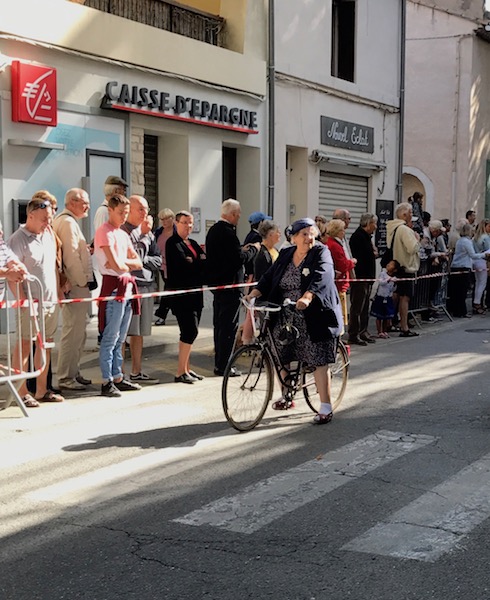

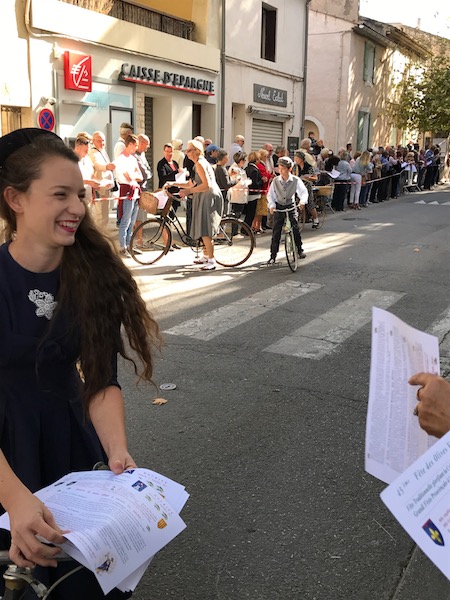
Then it started with a small band and a set of people in a carriage, I believe this was the "queen" of the festival perhaps?

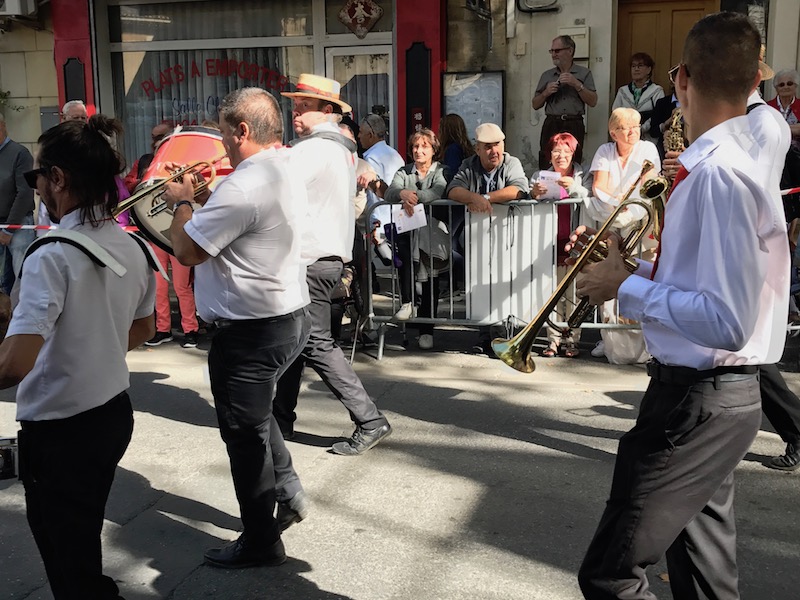
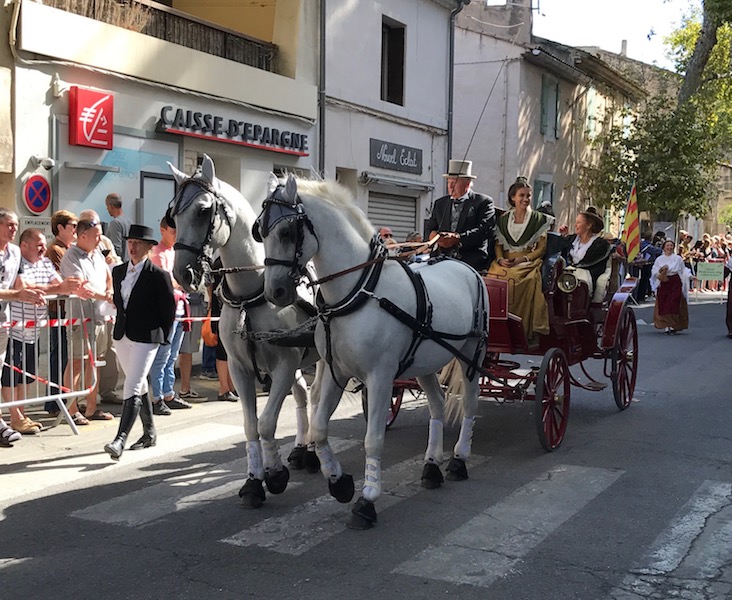

Between each section, there would be people carrying a sign indicating what the next section was. This is the start of the parade, and it says "Mouriès, Histoire de notre village a travers les siecles" or "Mouriès, history/story of our village throughout the centuries".
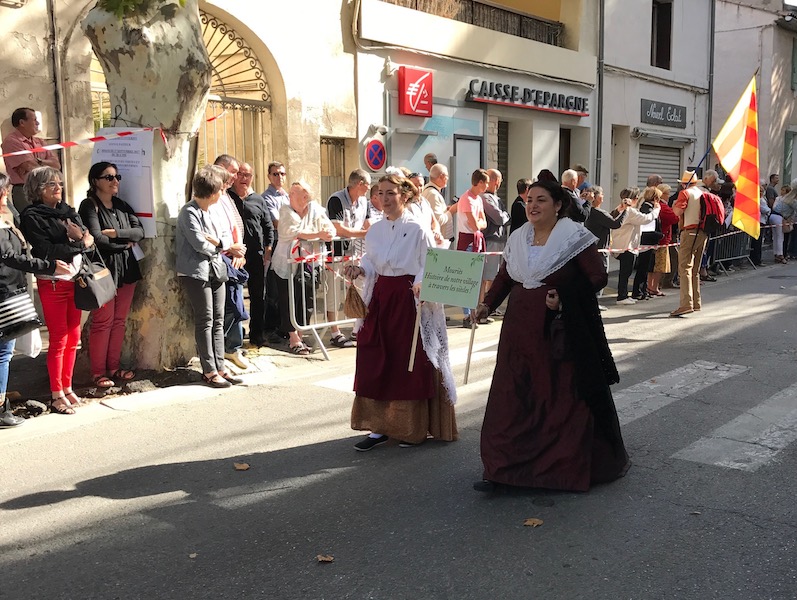
Up first were a set of people called the Ligures, that lived in the naturally protected high hills (where we started walking the other day). Archeologists have dated their installation there to the 7th century BC. The village was at an ancient crossroads and had favorable terrain and climate for agriculture. Within the parade, it started with the Monks of Chateaurenard, then a set of musicians, and then a set of pretty funny people, who are listed as the "beggars" along with their rat. As with any parade with horses, invariably. you'll have a horse "do his business". In this case, it was almost the FIRST horse, if you look at the pictures with the Monks ... there is a horse pulling a boat. The crosswalk before the horse gets to it is clean ... then after the horse passes by, there is a big pile. One of the beggars then comes up and kicks it, spreading it about. You'll see that pile spread out as people go through it, and in the videos, you can see some people walk through it while others take note and walk around it.

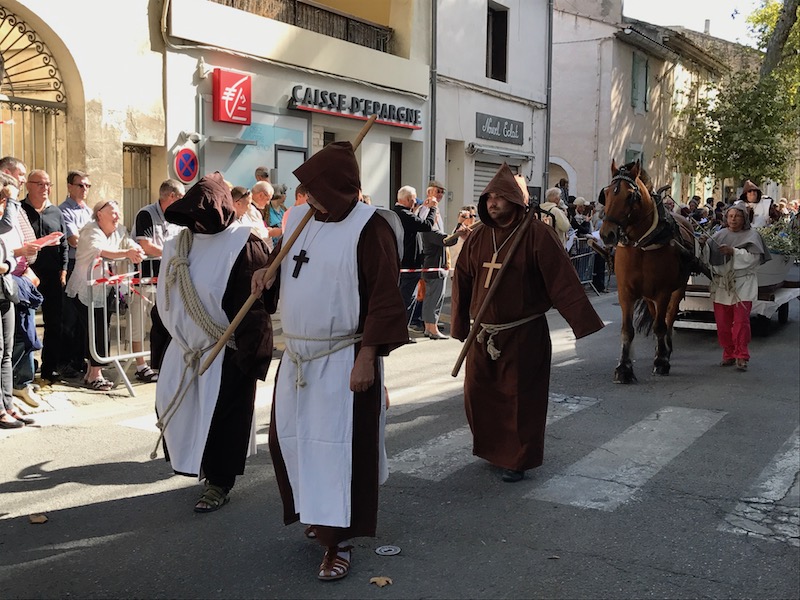
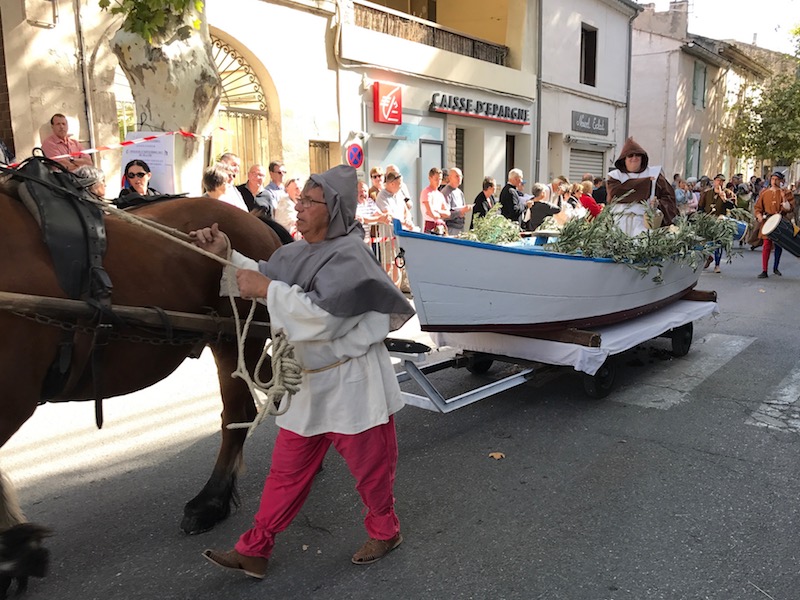
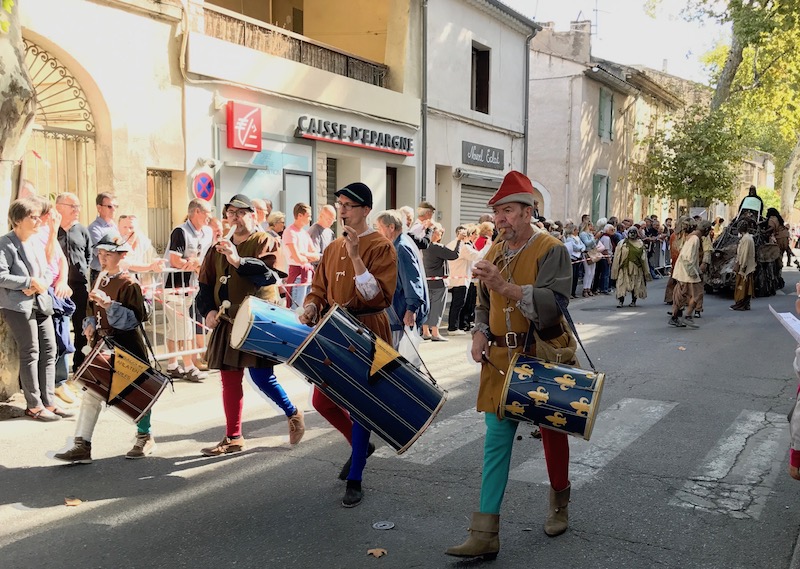
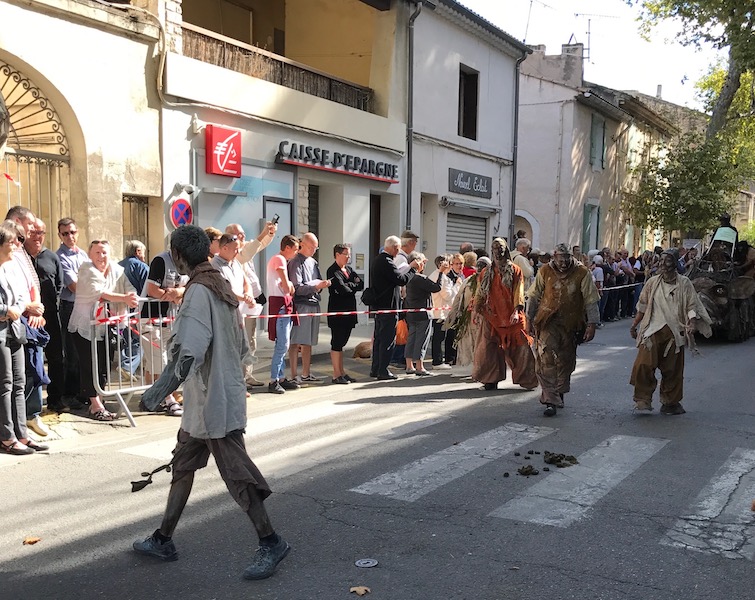
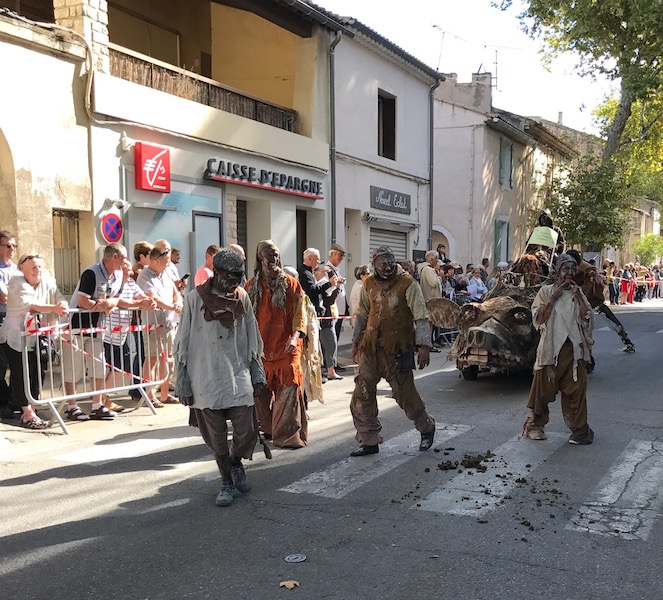
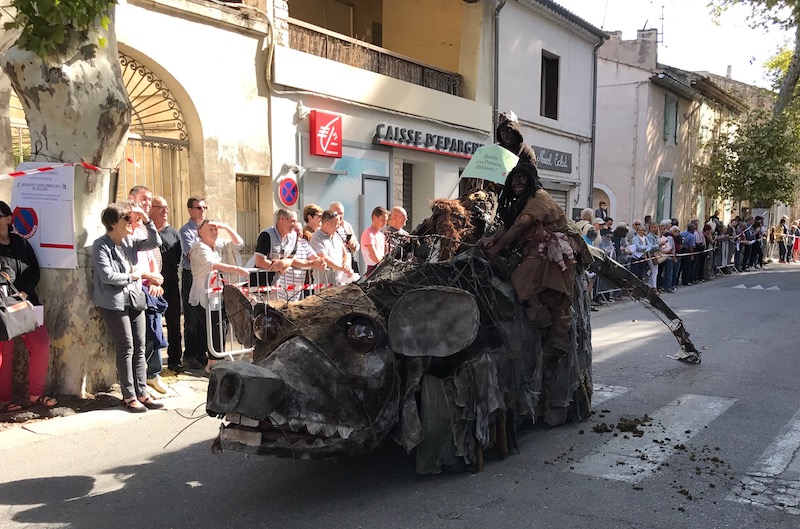
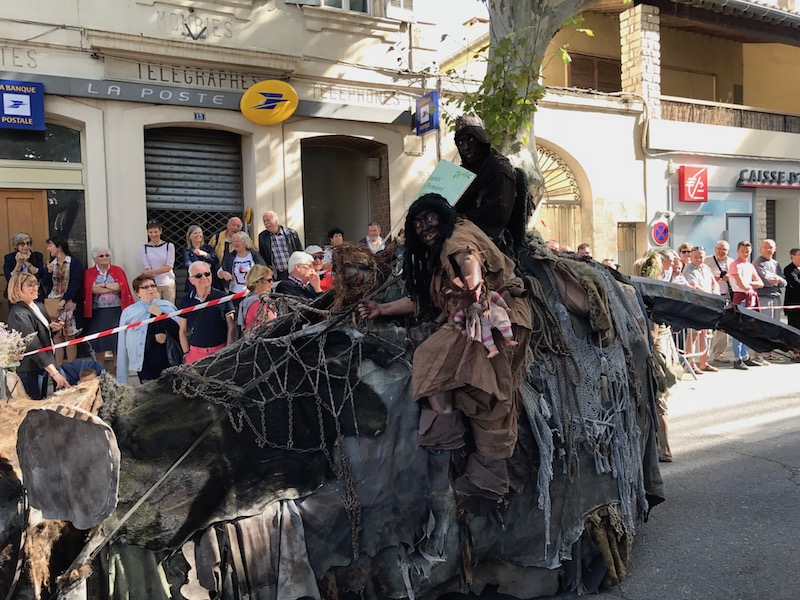
Next, we fast forward into 1796 and the establishment of the actual town of Mouriès. You see the bourgeois (middle class) and the nobles with their horse-drawn carriage.
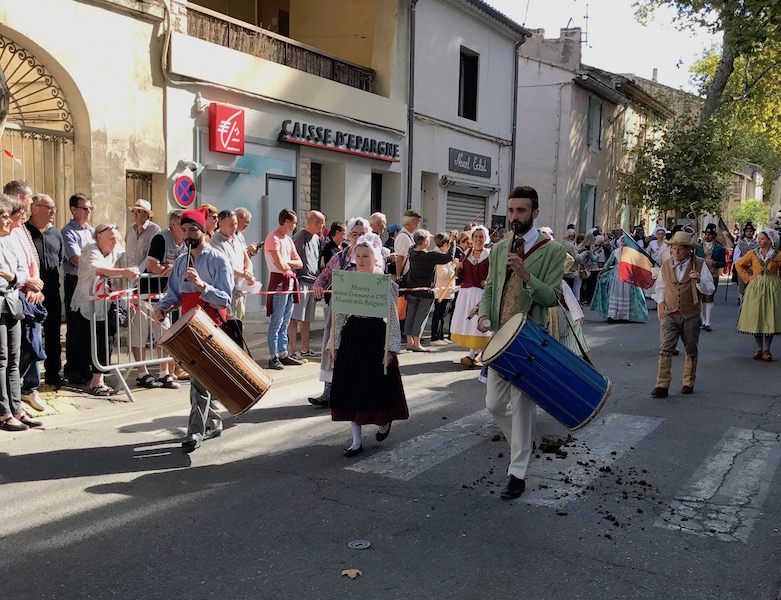

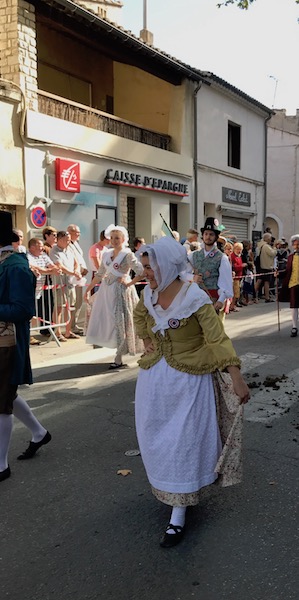
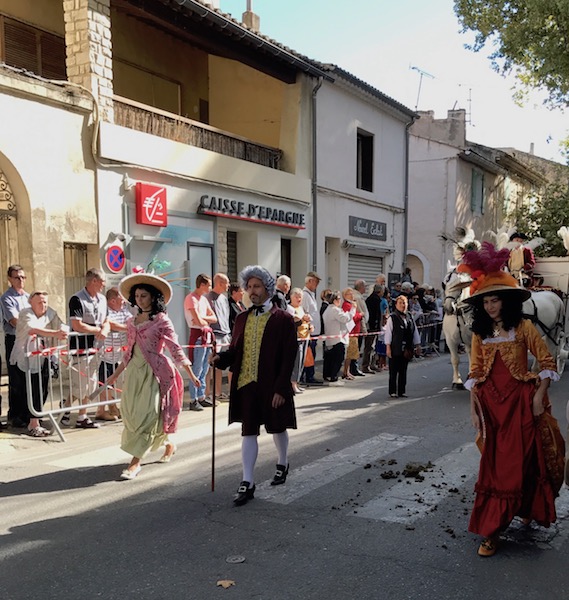
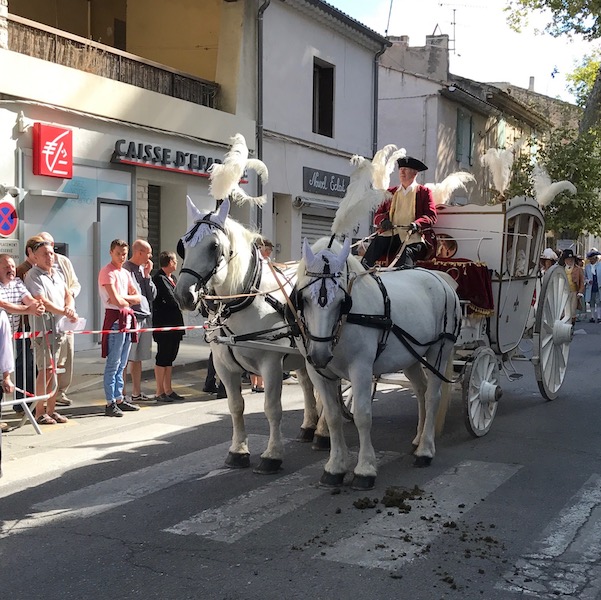
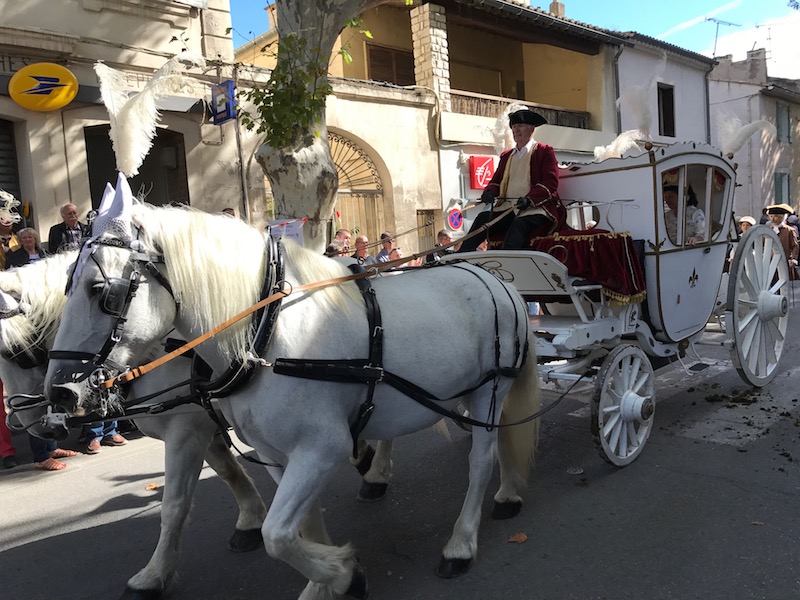
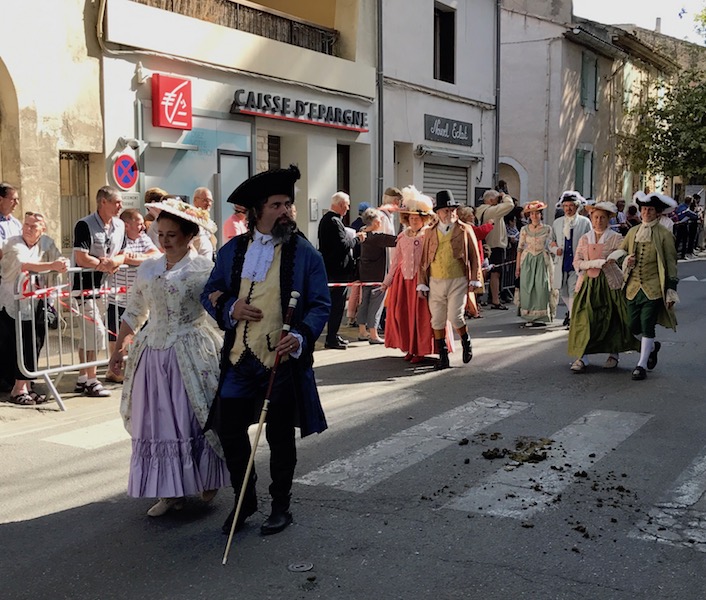
One thing we say a lot of were musicians playing both a one-handed recorder and a drum at the same time. I would thinking playing one or the other was okay, but playing both at the same time must be a bit difficult.


This was one of the more interesting ones for me, in fact. These guys who have a fake horse around their waist, dancing around, called Les Chivau Fru. They seem quite traditional in the area and if you google for Chivau Fru, you can find plenty of YouTube videos with different sets of these horsemen. The pictures don't really do it justice ... you need to watch these in video to really get the full view! Behind them were a set of dancing ladies as well.
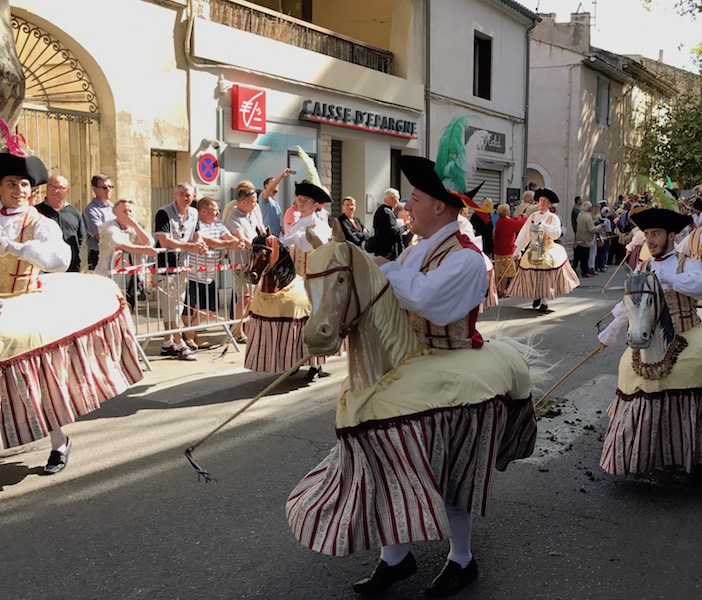
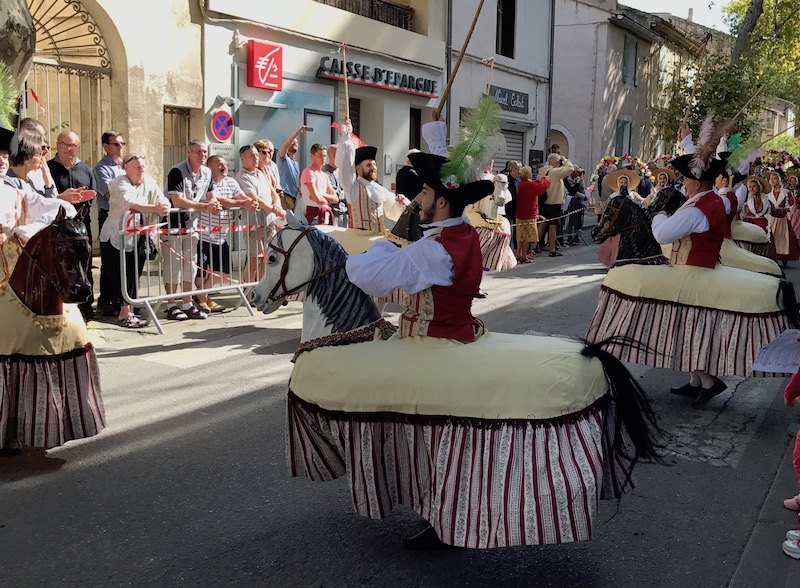
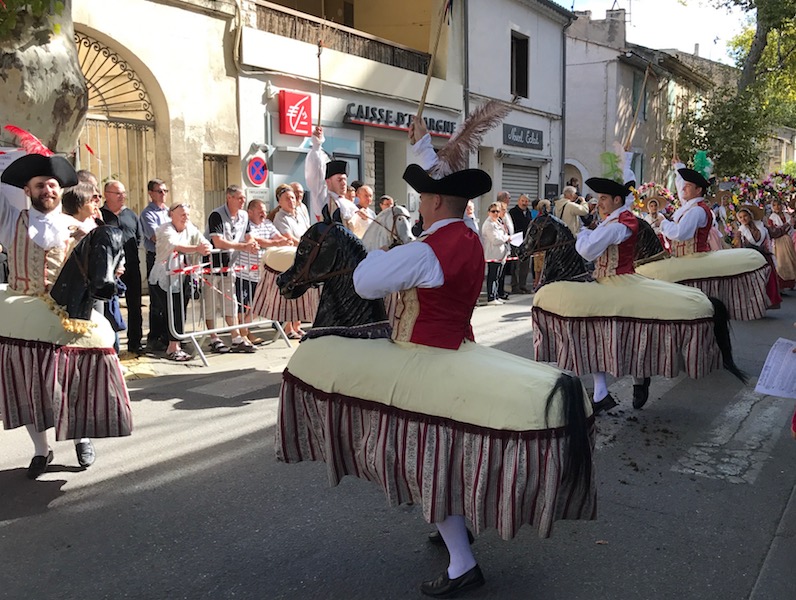
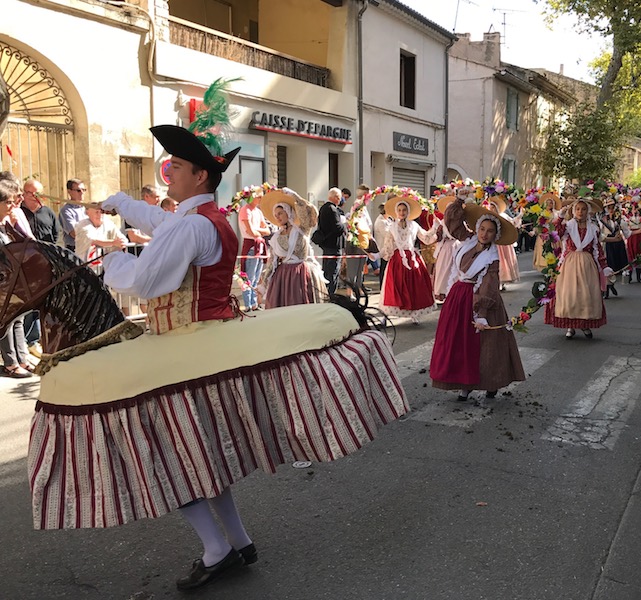
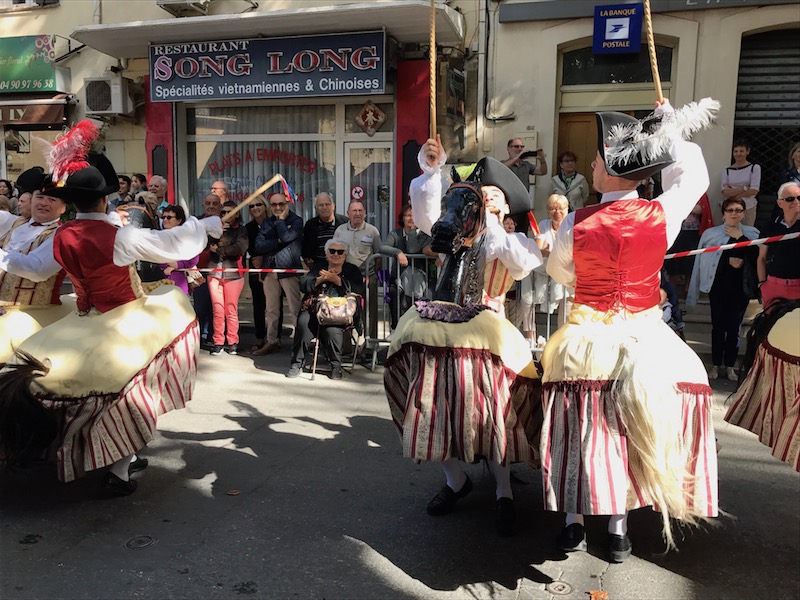
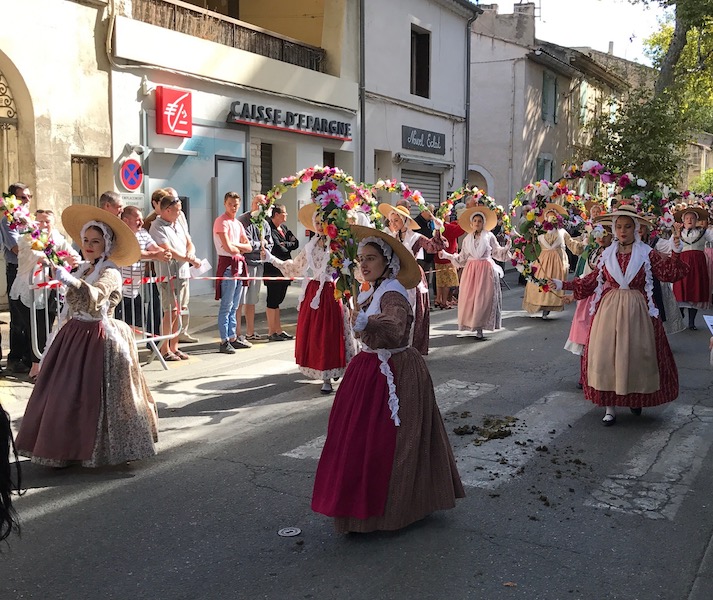

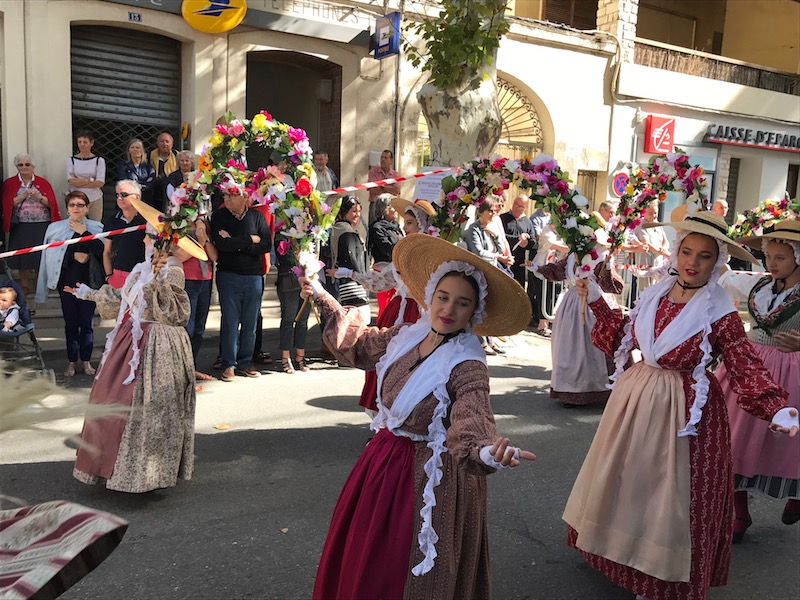

Then came the Confrerie des Saintes Maries de la Mer, or the Brotherhood of Saint Mary of the Sea, which is a religious association dating back 700 years.


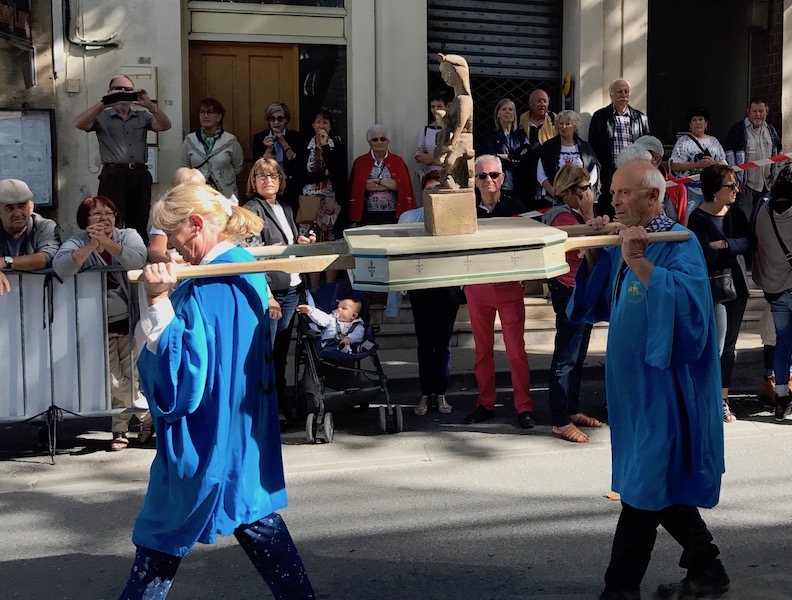
Then various pilgrims as they made their journeys across France and Spain.

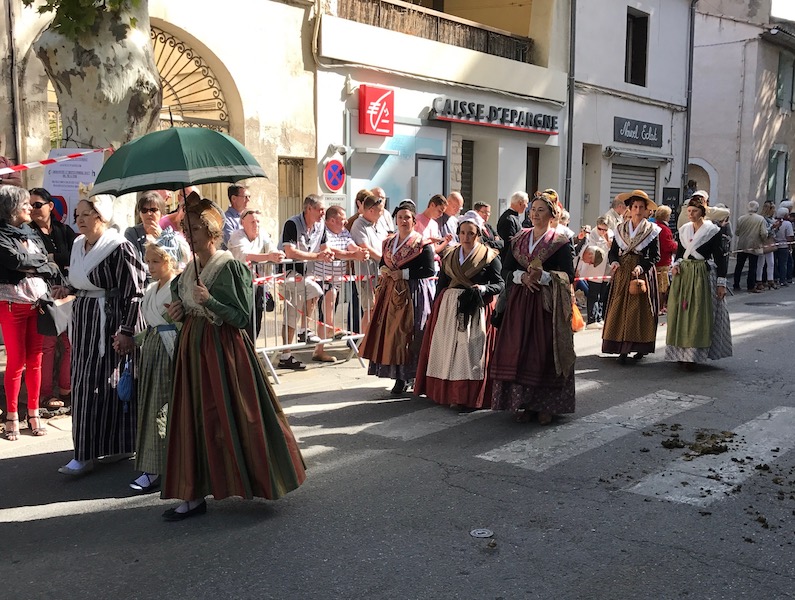

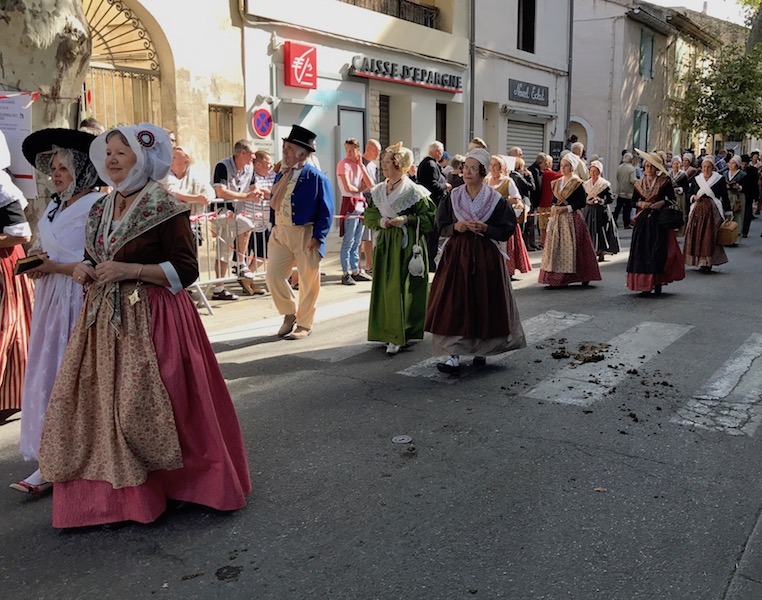
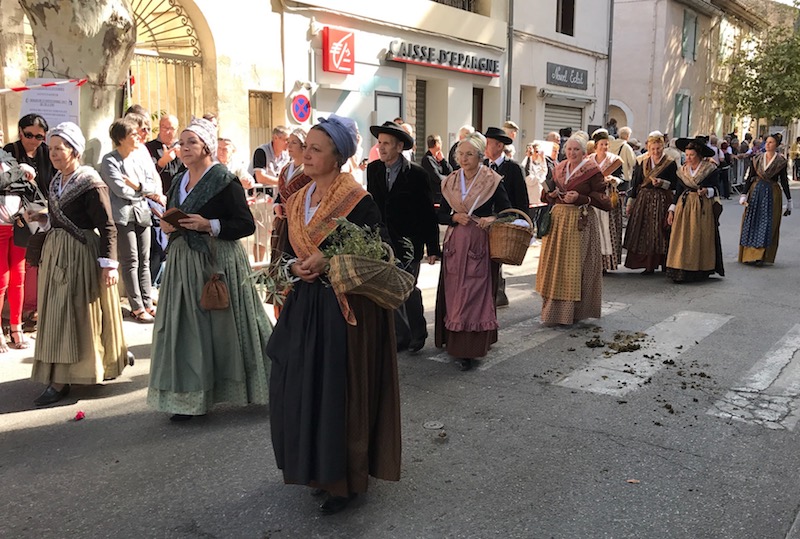
Next section is entitled "Glory of the Terrain", and has different people with different agricultural products, like olives and sheep, and various folk dances that were associated with the people living in this area.
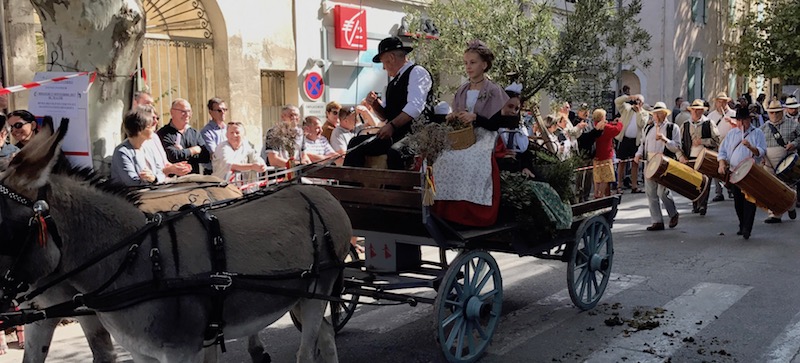
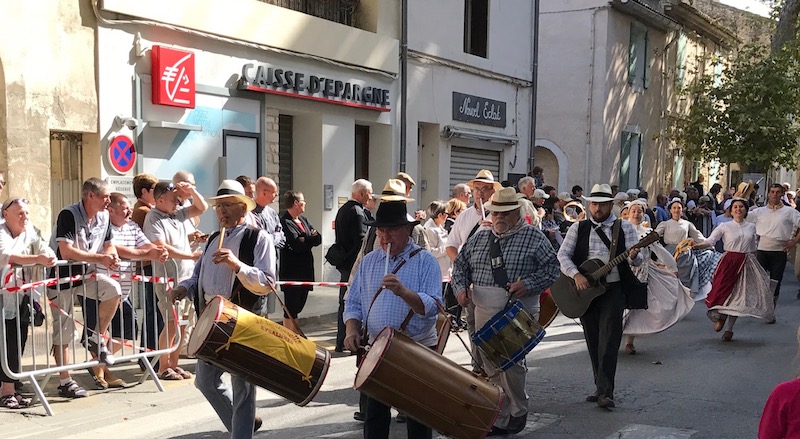
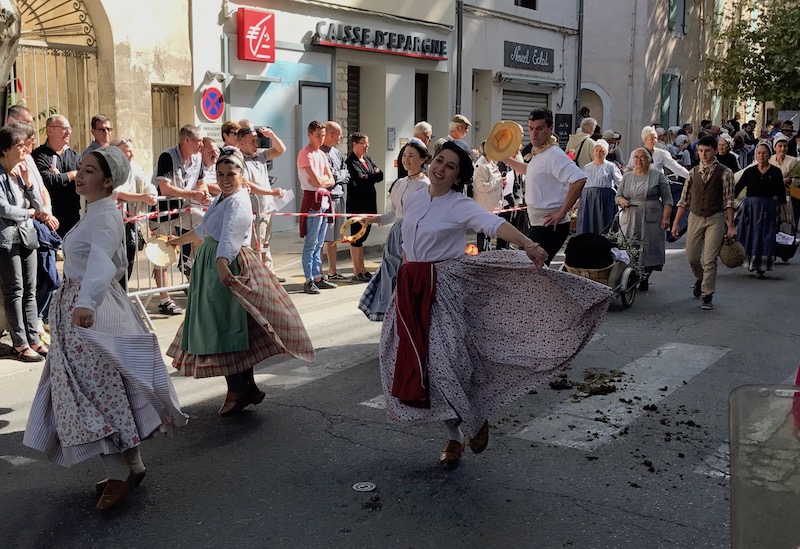

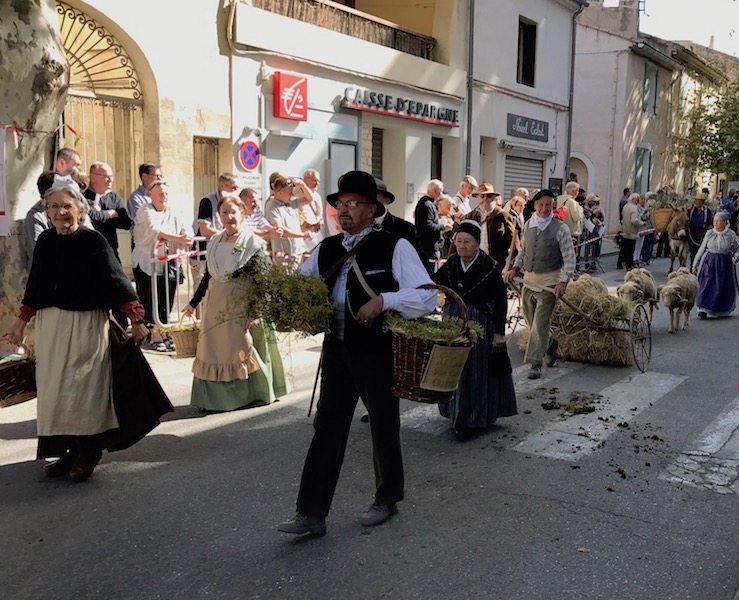
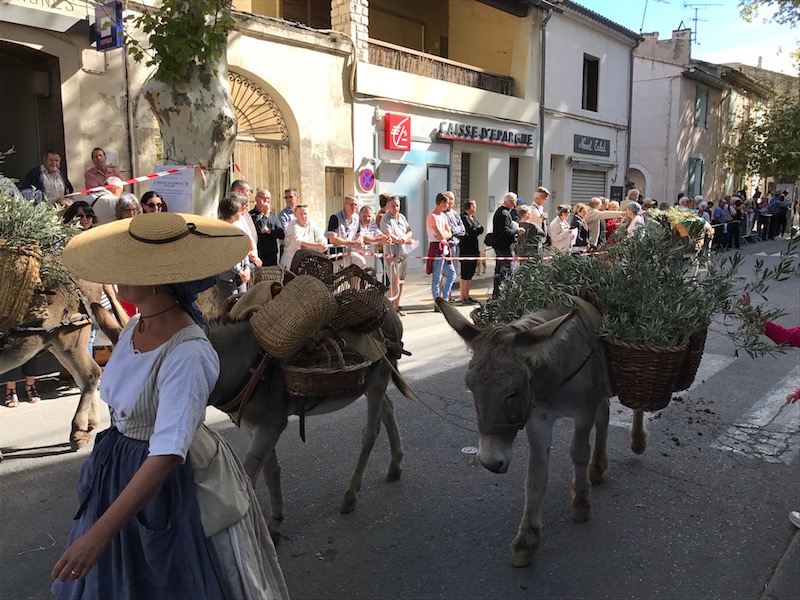



There is a group called Roudelet Felibren whose mission is to conserve the traditional folklore of Provence, including song and dance .. this is one of their groups
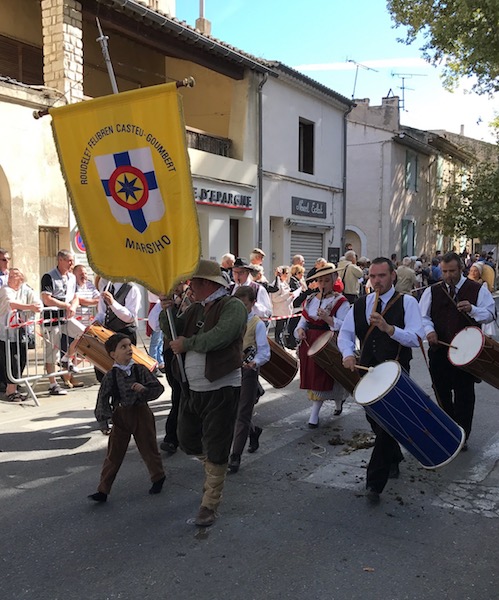
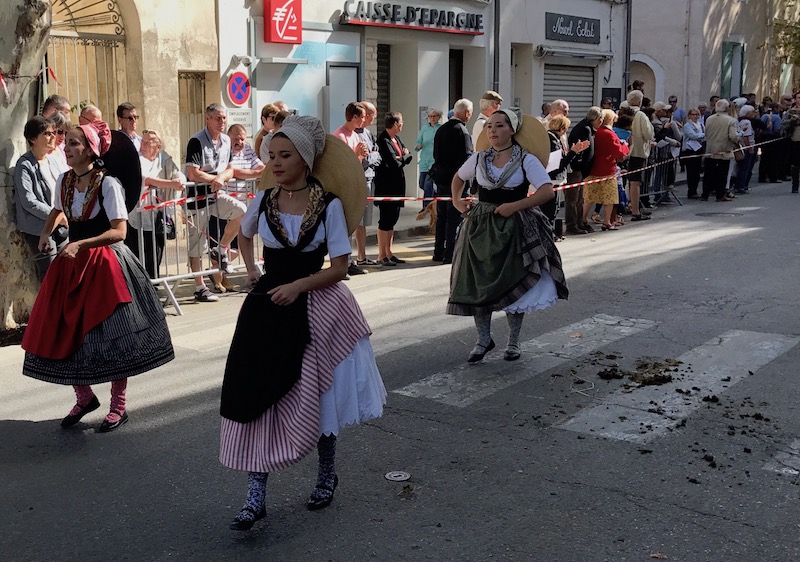
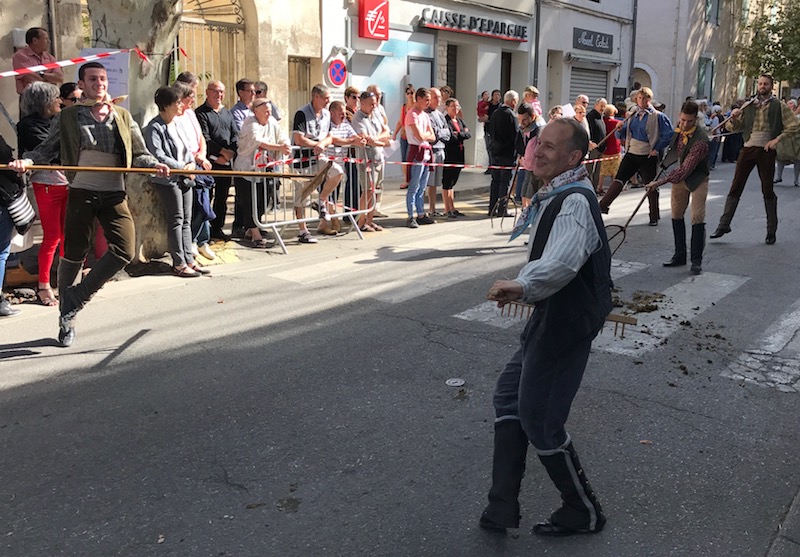
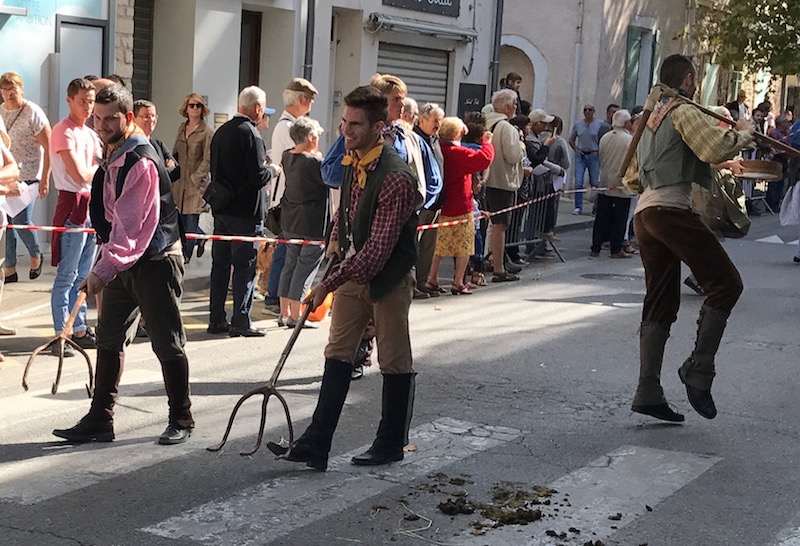
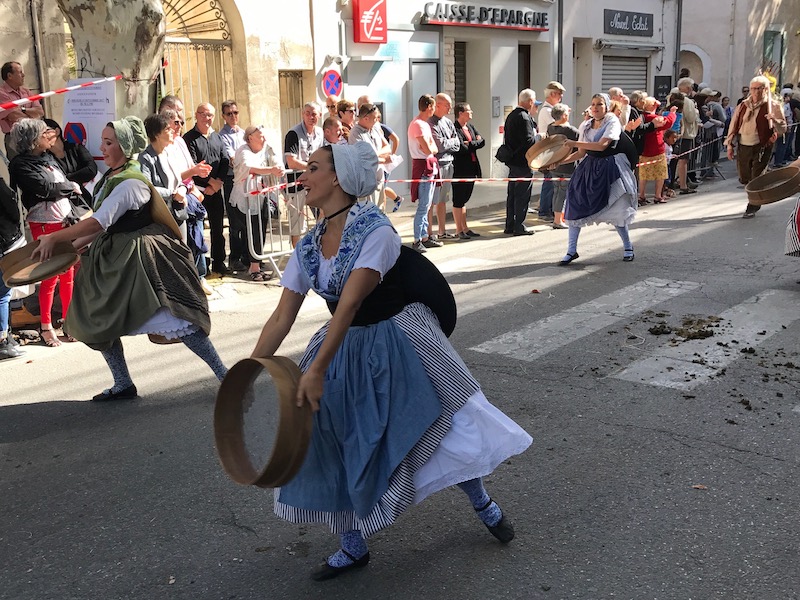
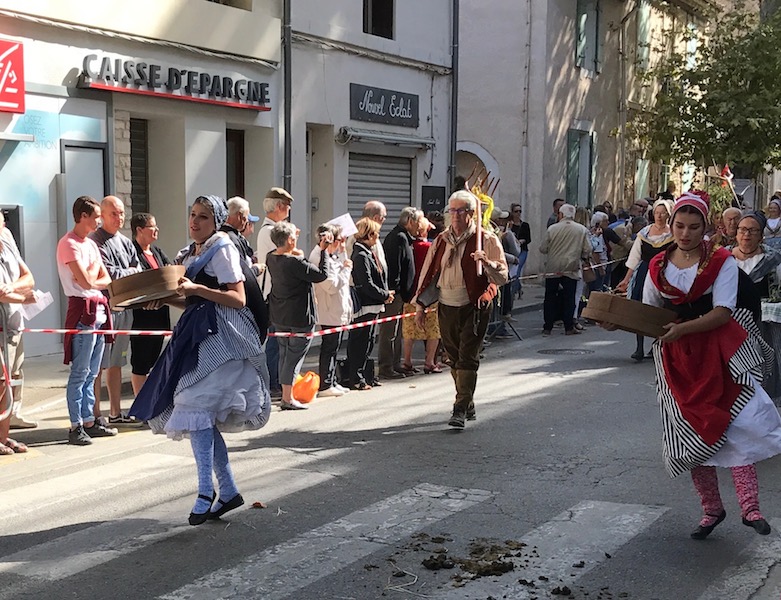
More of these groups ... later in the afternoon, many of these groups would give demonstrations of folklore dancing that we also were able to see.

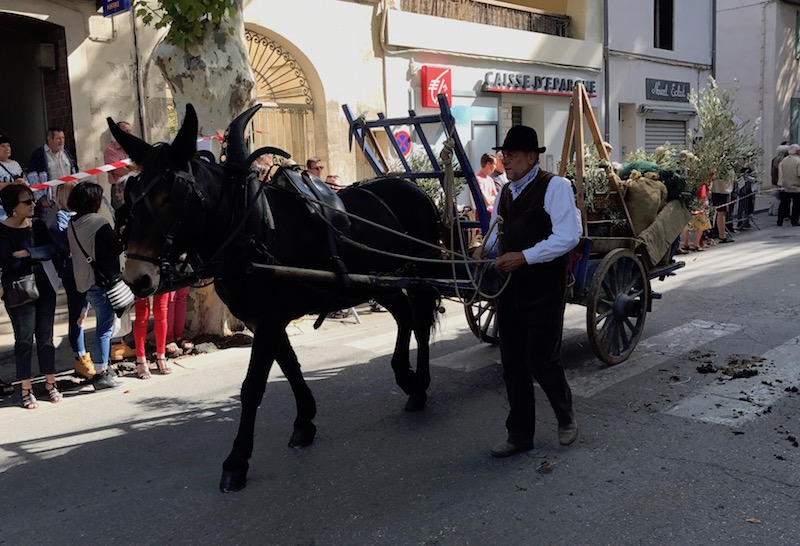
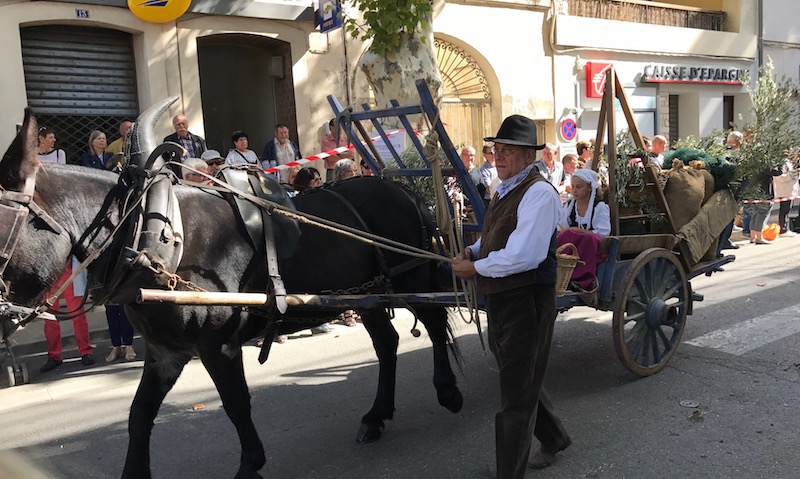


Throughout the parade, there were lots of native costumes and old things, like old baby carriages.
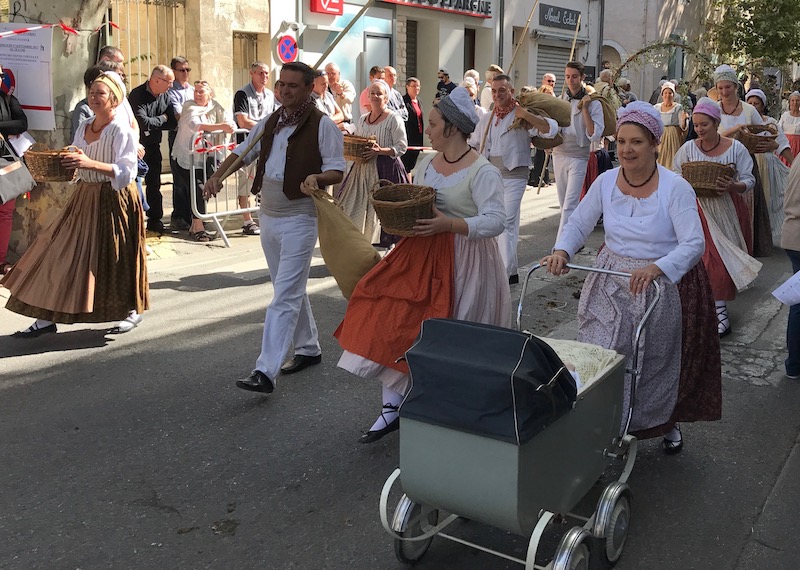

Paul Revoil was a French diplomat who died in Mouriès in 1914. The main square in town is named after him, as he was instrumental in bringing drinking water equipment into the town. Now you can see various costumes from the early 1900's in Mouriès.


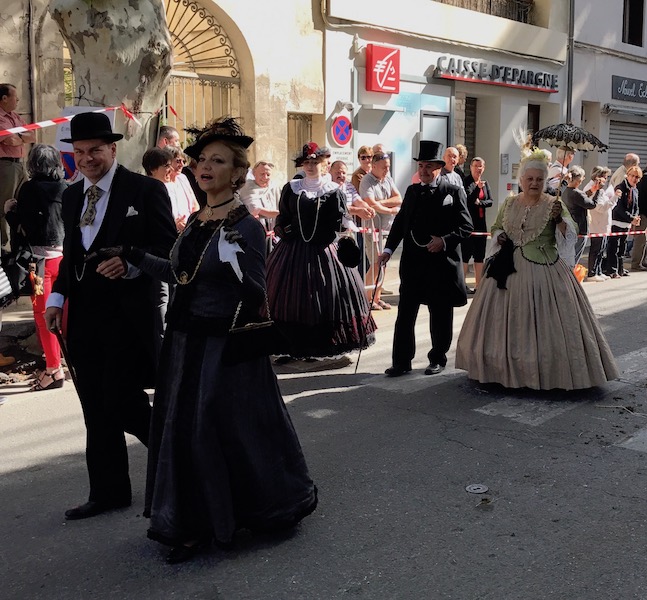
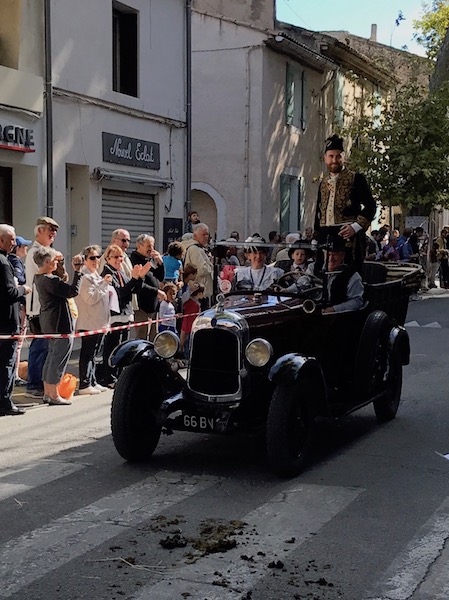
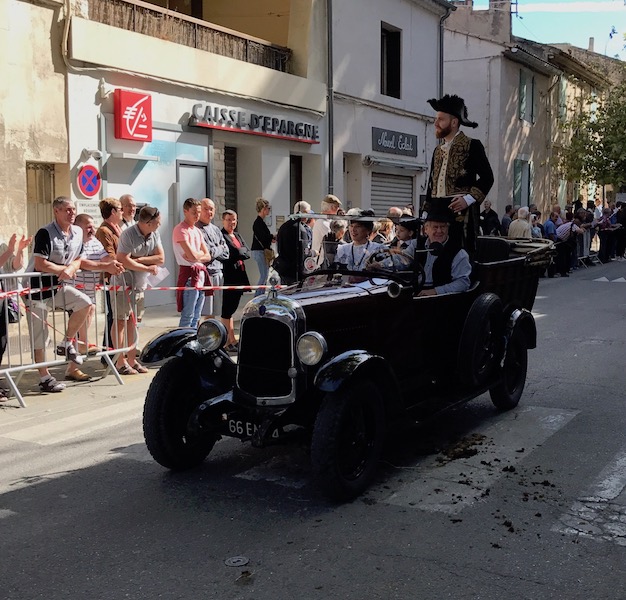
These are the musicians of the Reveil Tarasconnnais.

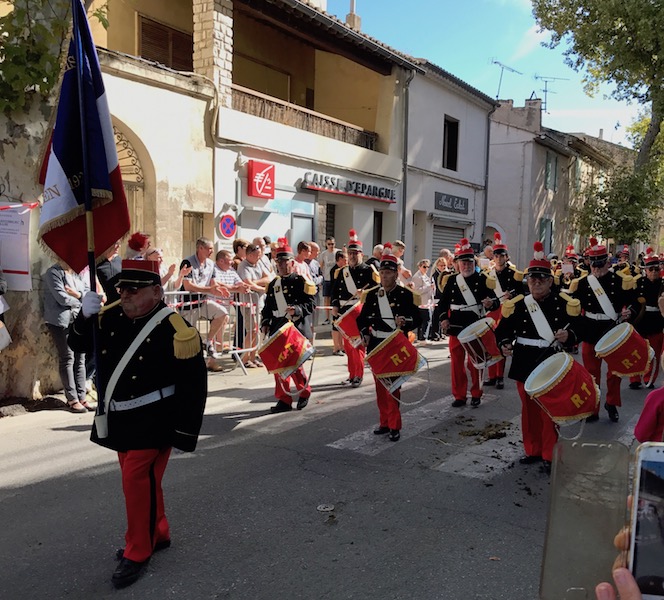
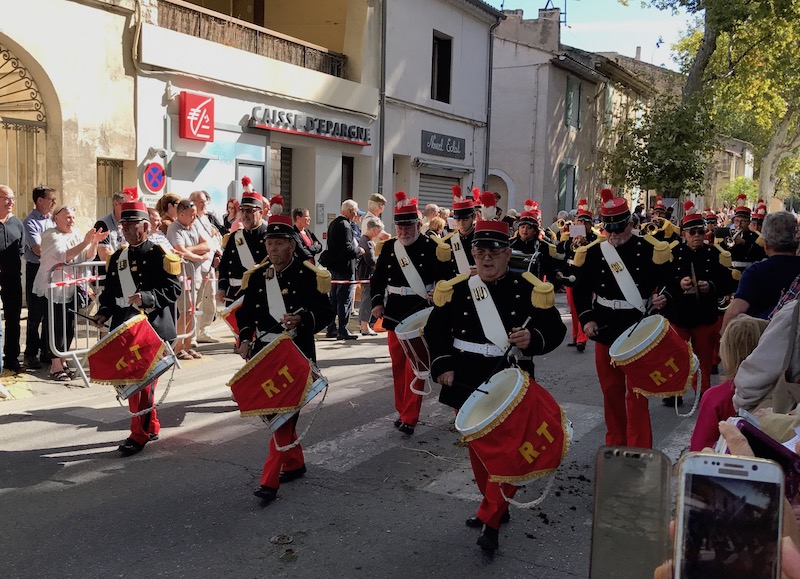
I didn't quite get these guys ... dressed in night clothes



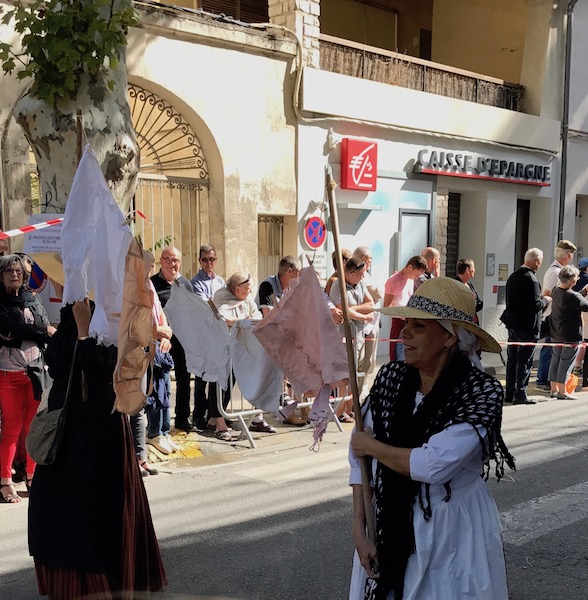
These musicians and dancers are from Etoile de l'Avenir (or Star of the Future) from Arles and they have been around since 1906! They had interesting dancing with clapping pieces of wood together.

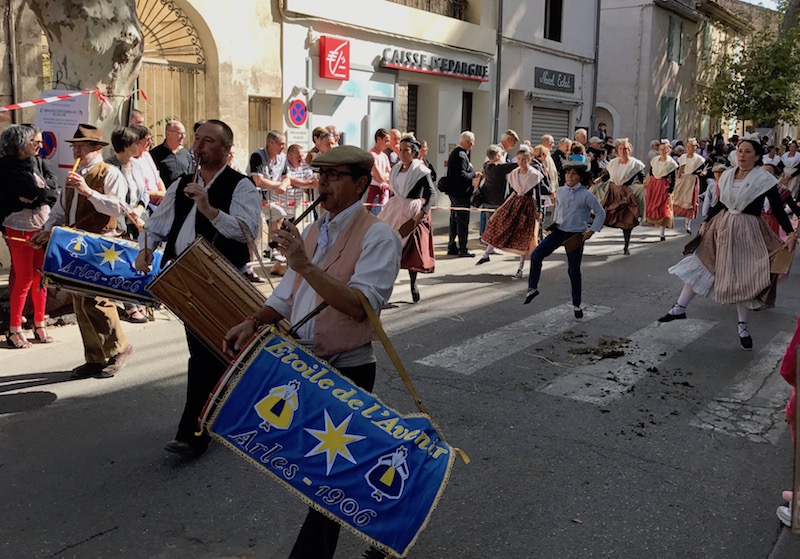
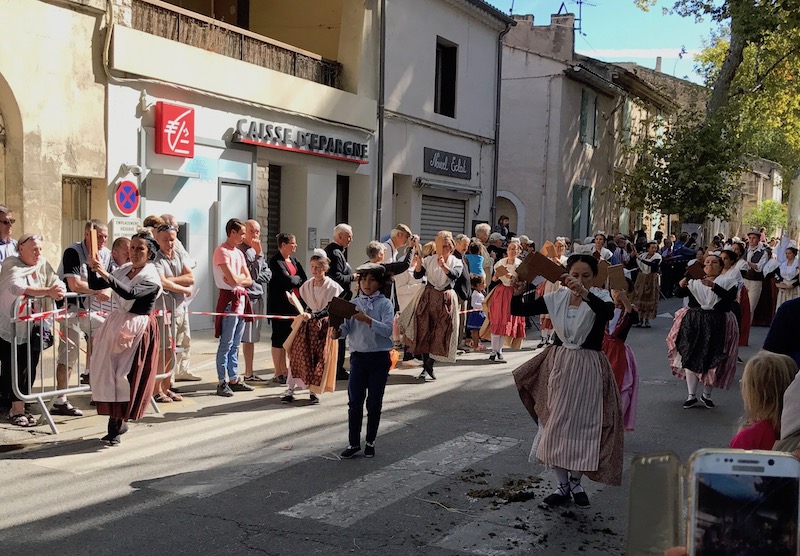

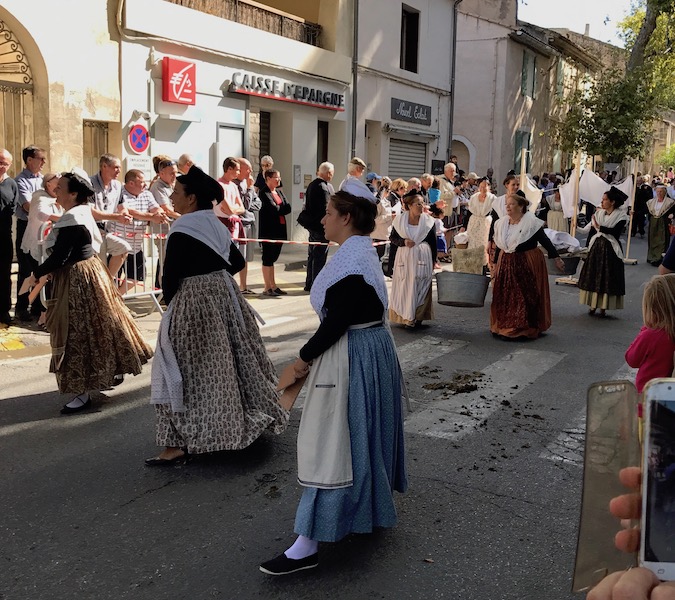
The first Provencal Festival in Mouriès dates back to 1912!
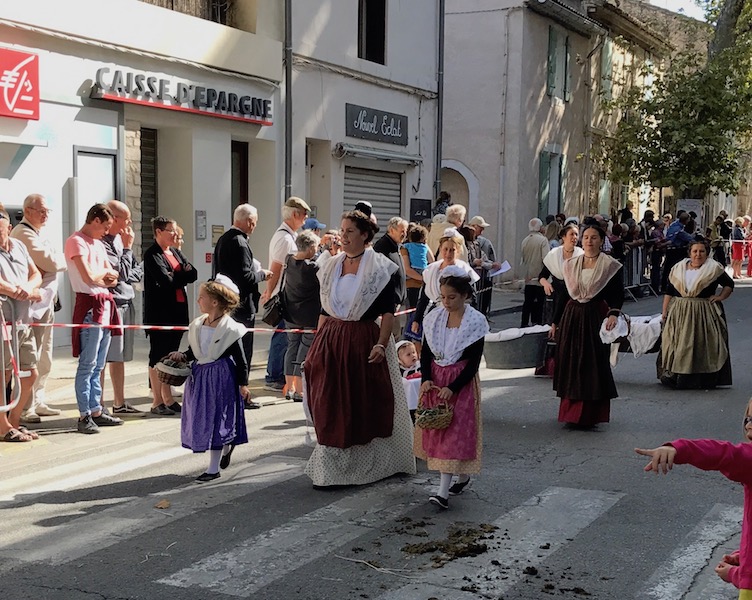
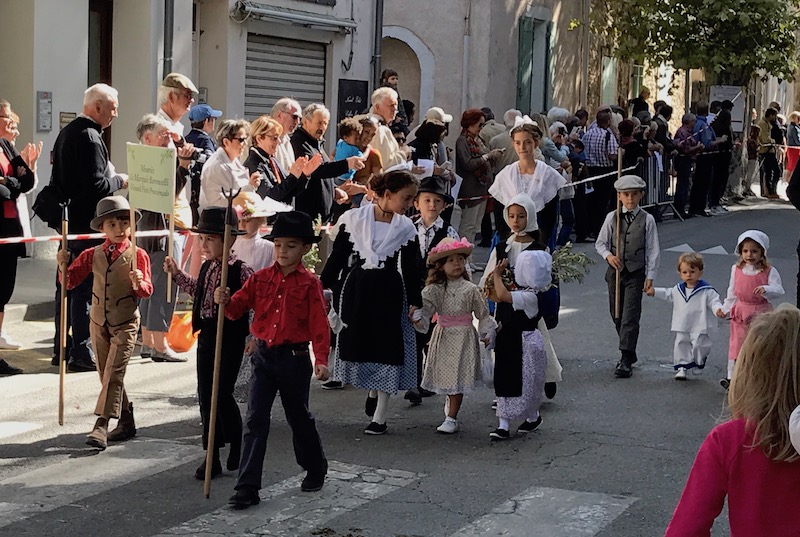
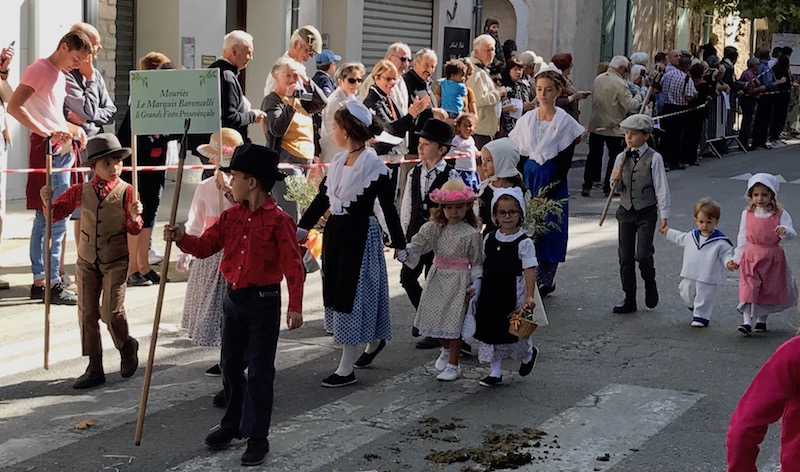
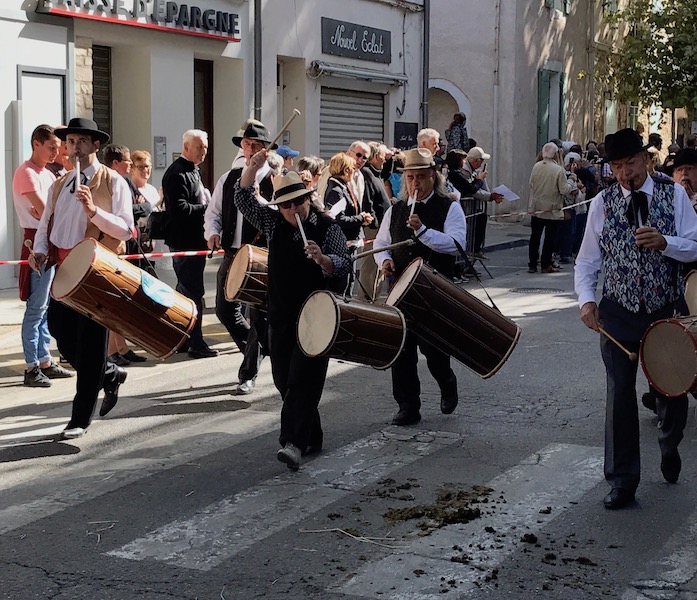
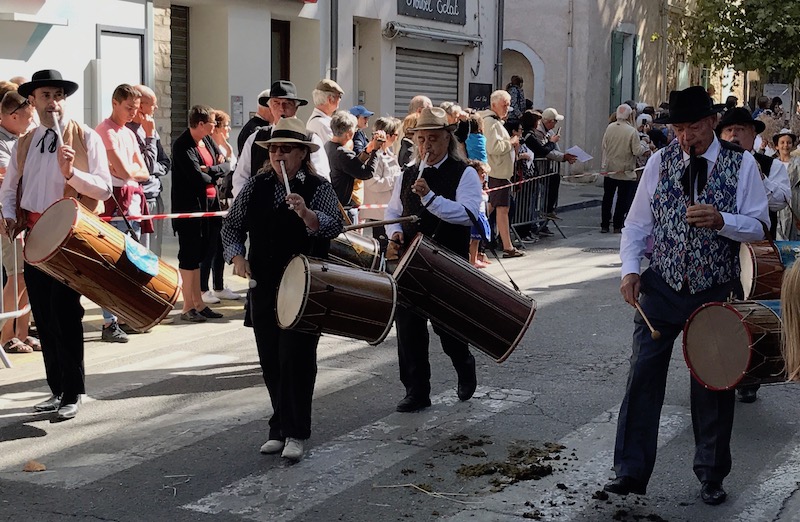
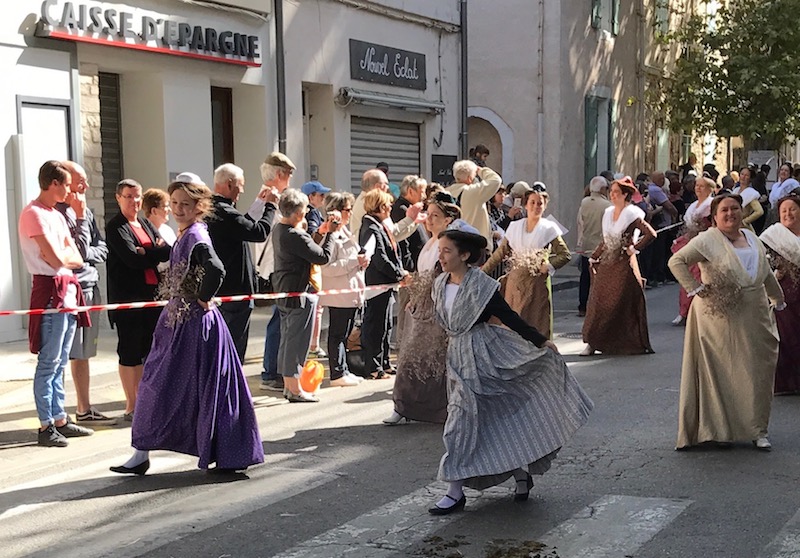



A set of horses was next, white horses that are native to the Carmargue, which is very nearby.
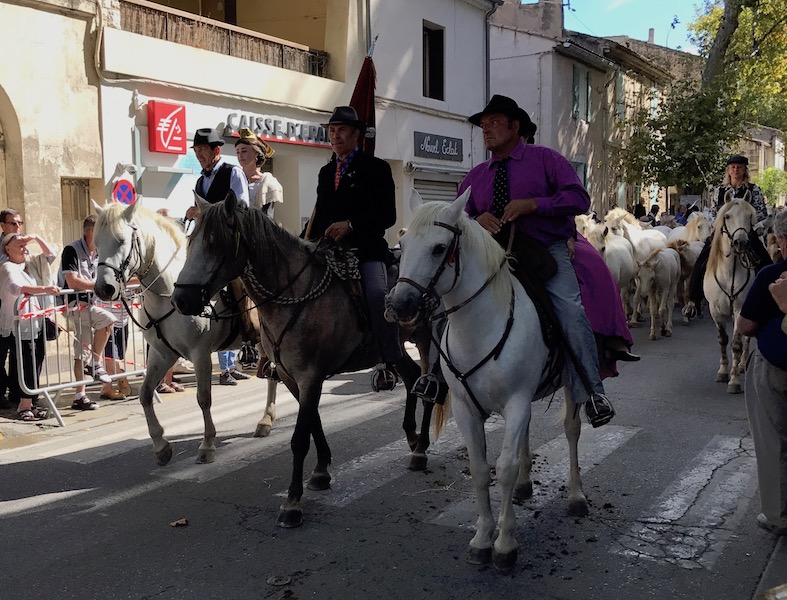
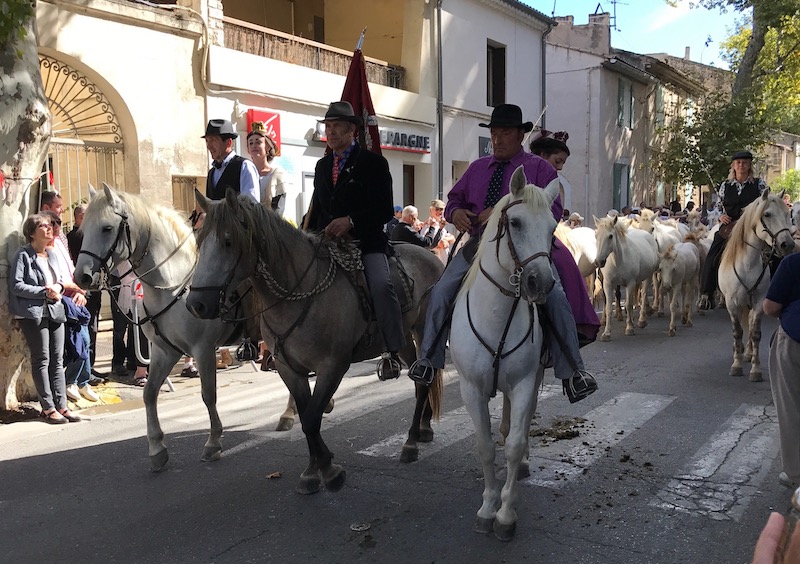
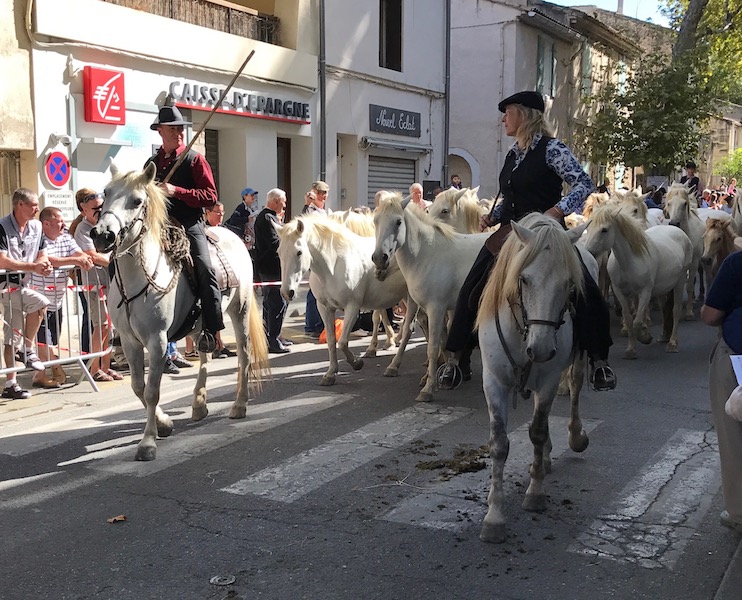
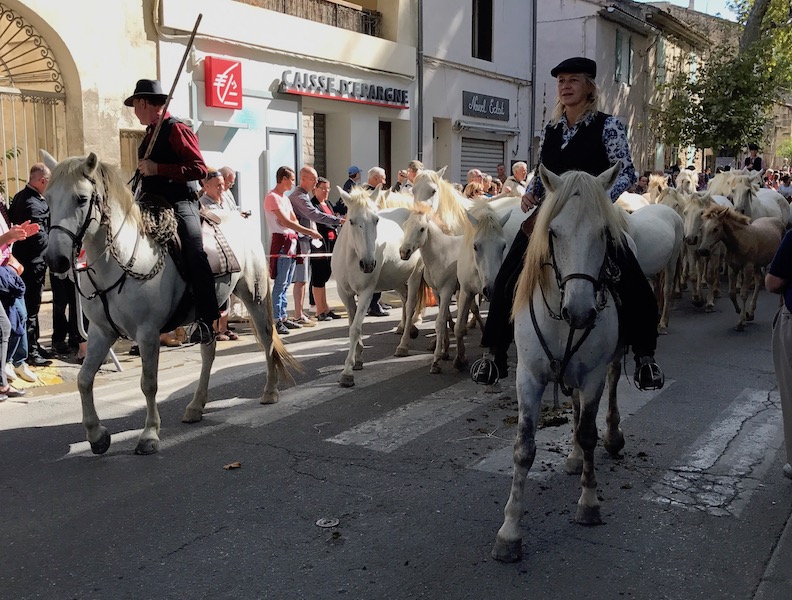

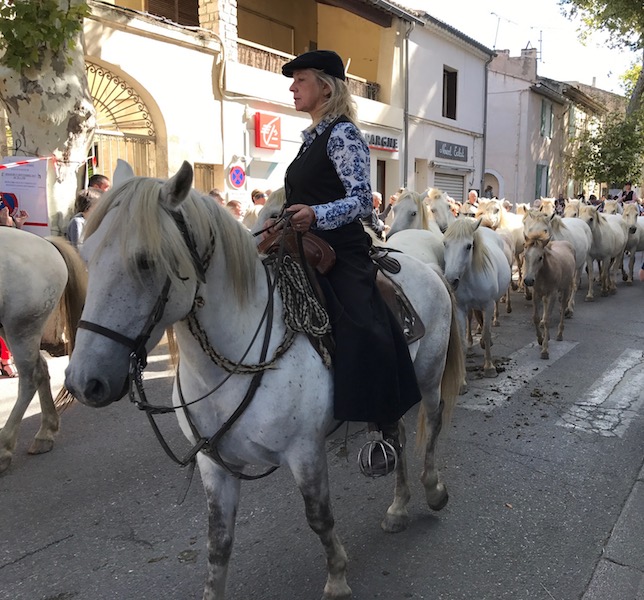
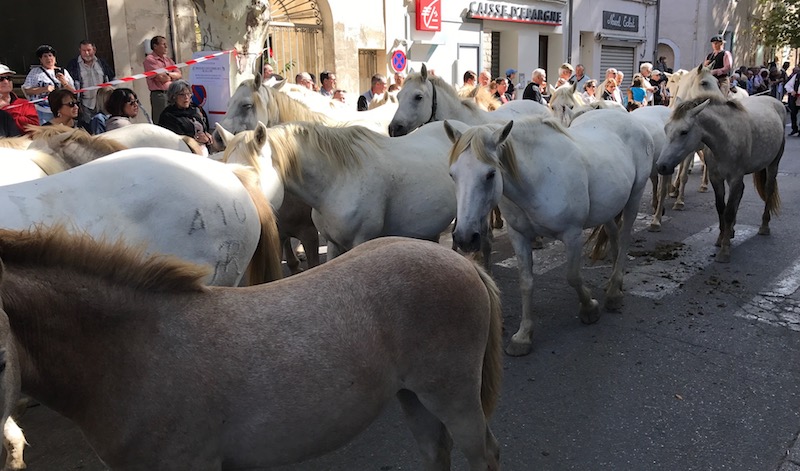
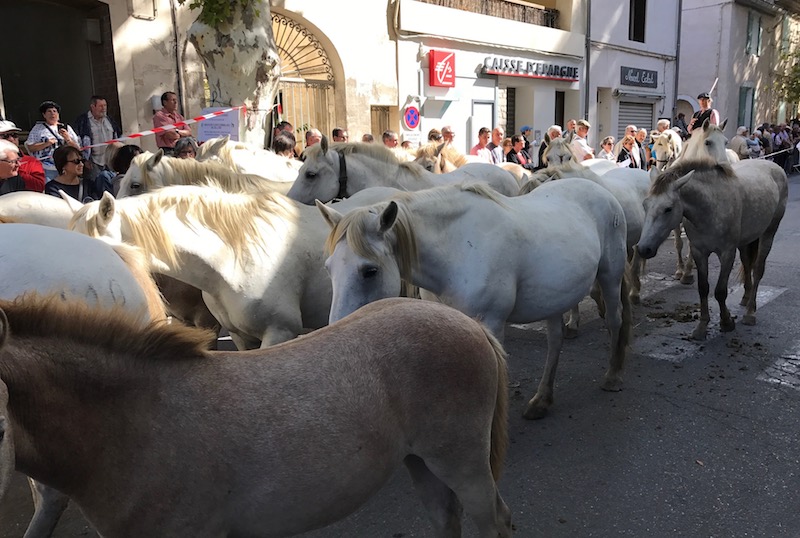
More in native dress of various periods...
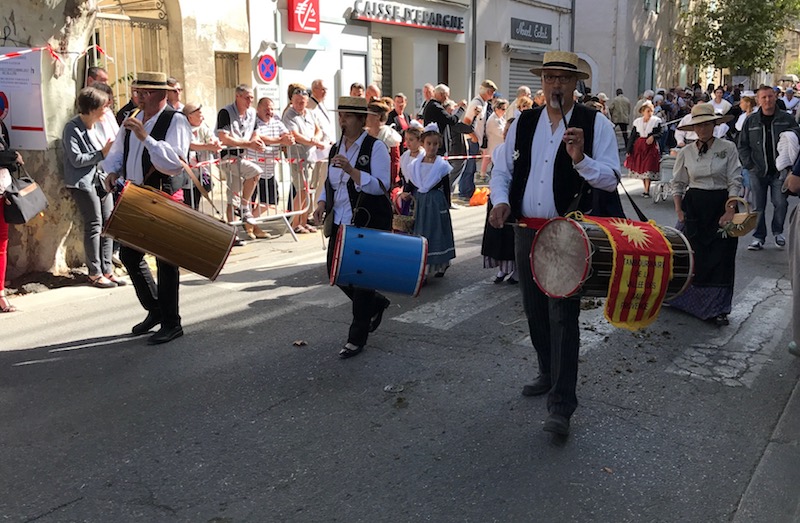


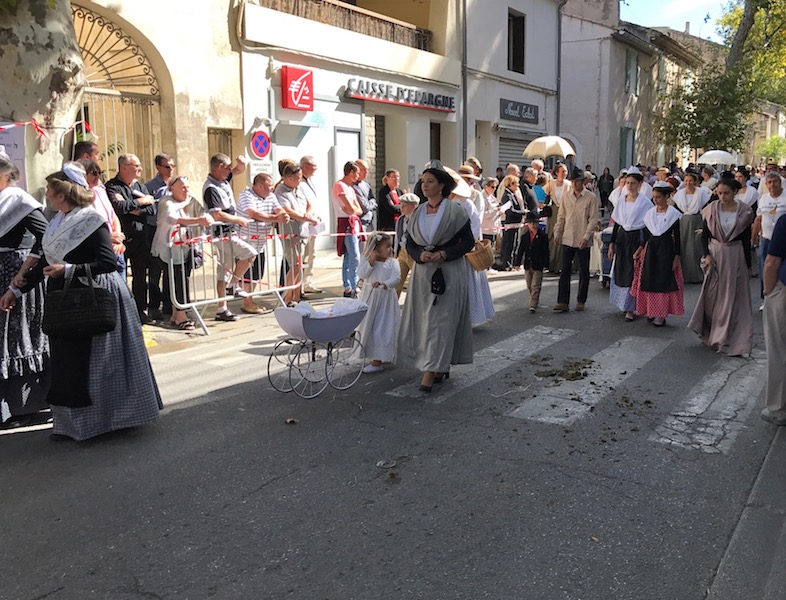
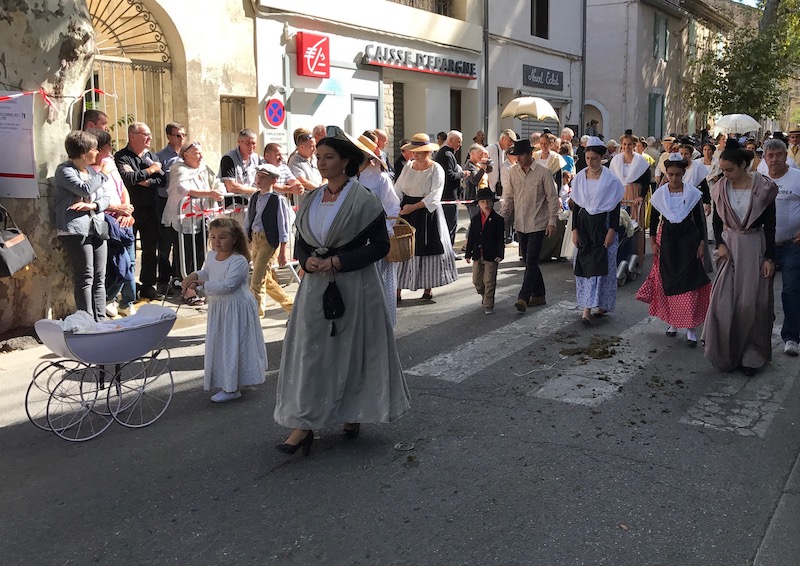
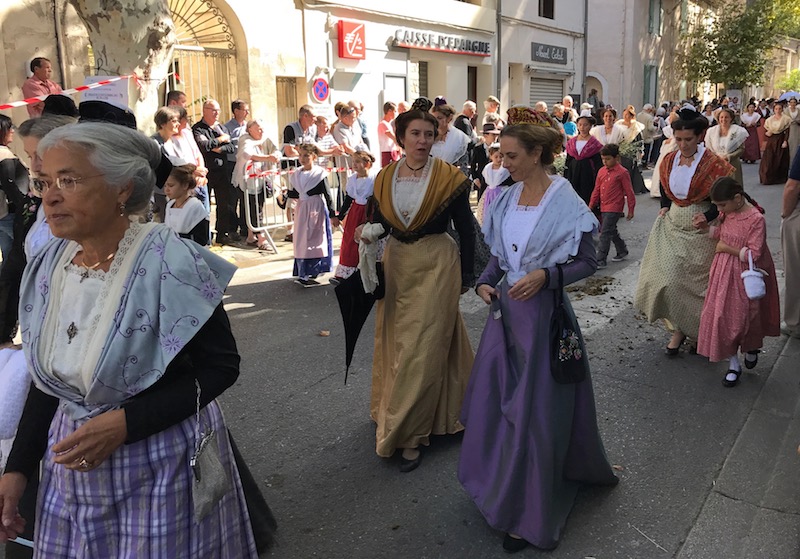


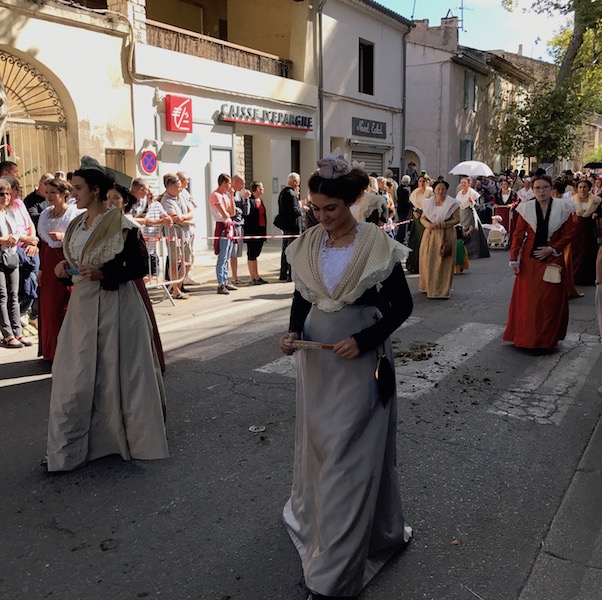
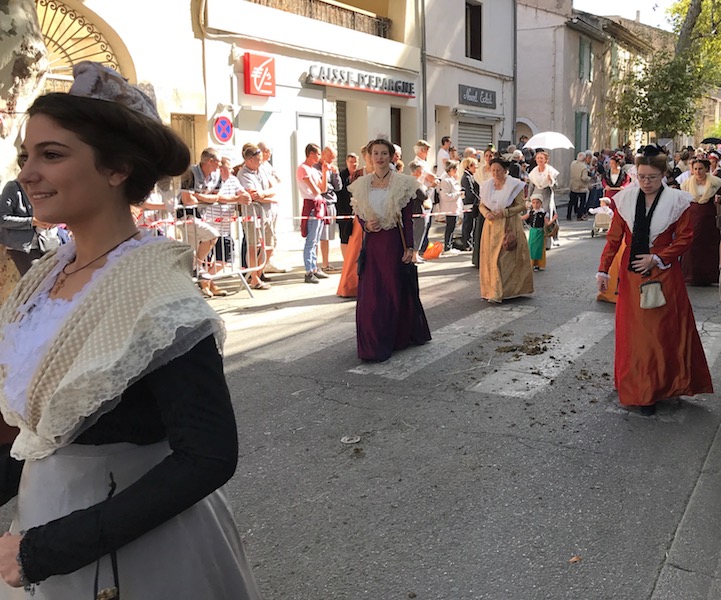
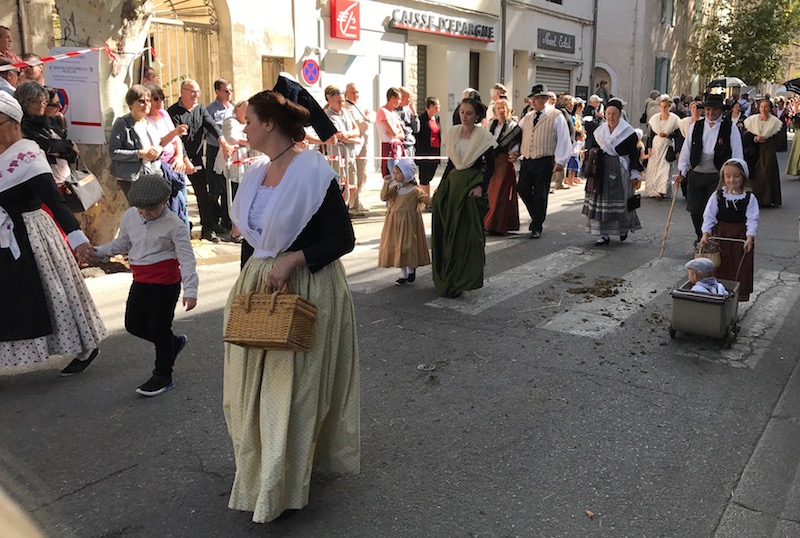

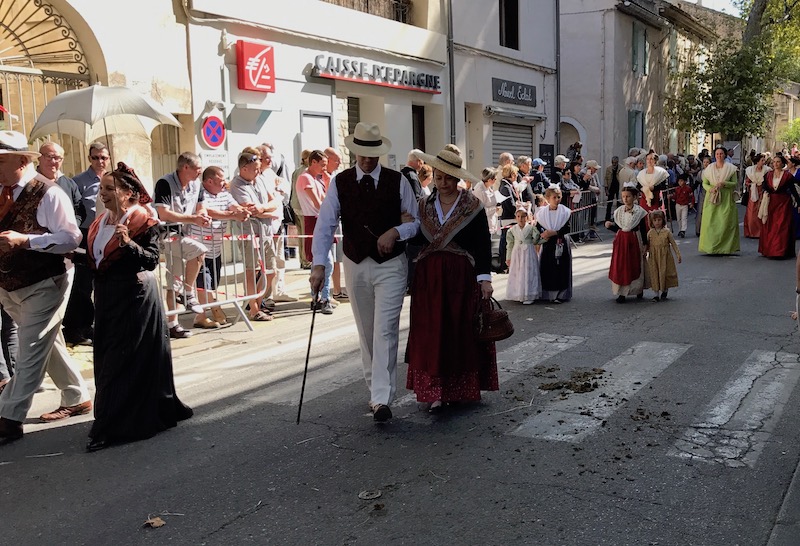
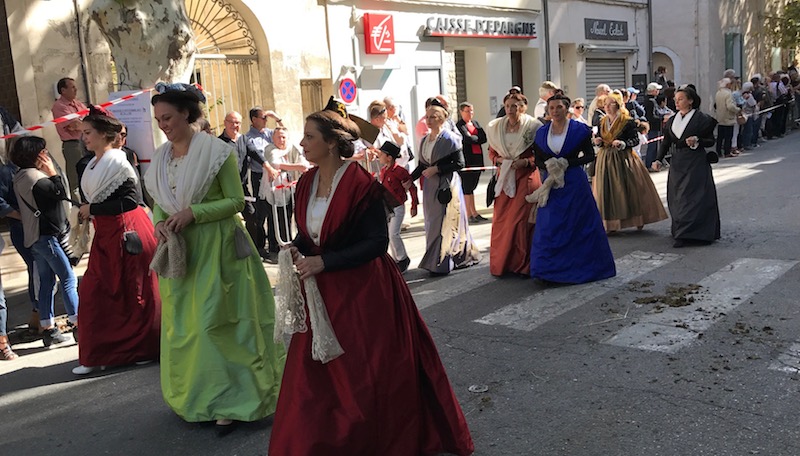

Including those in wagons and on horseback...


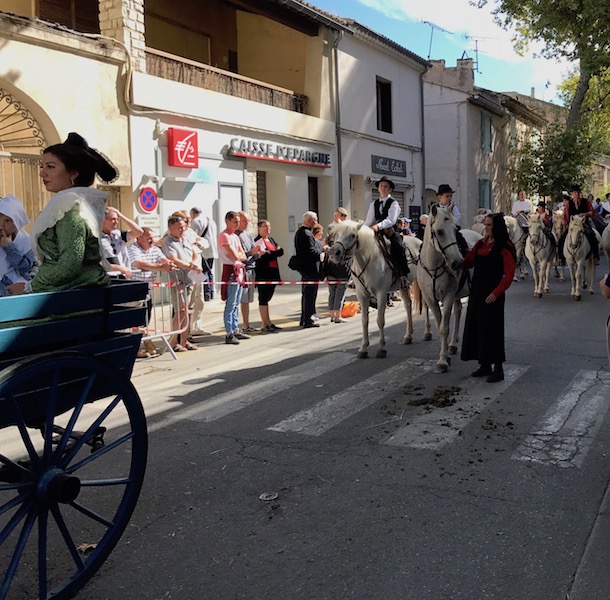
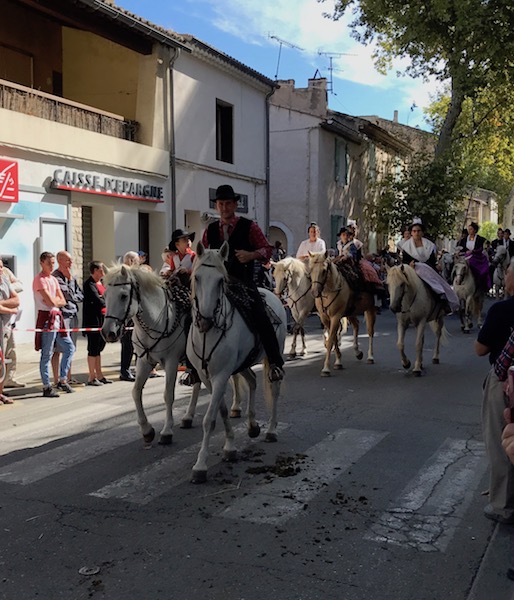
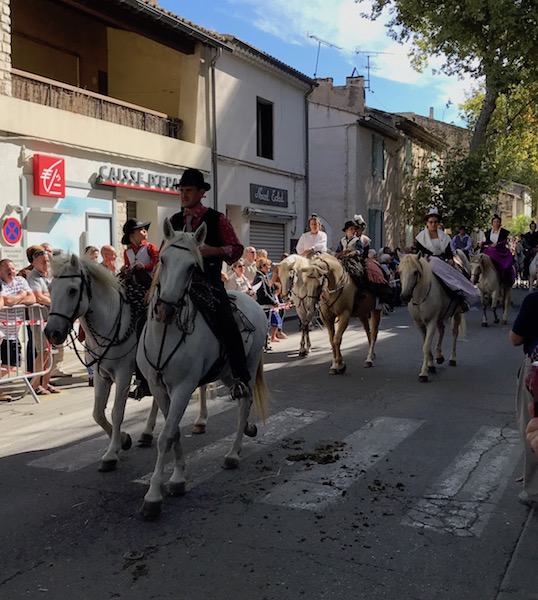
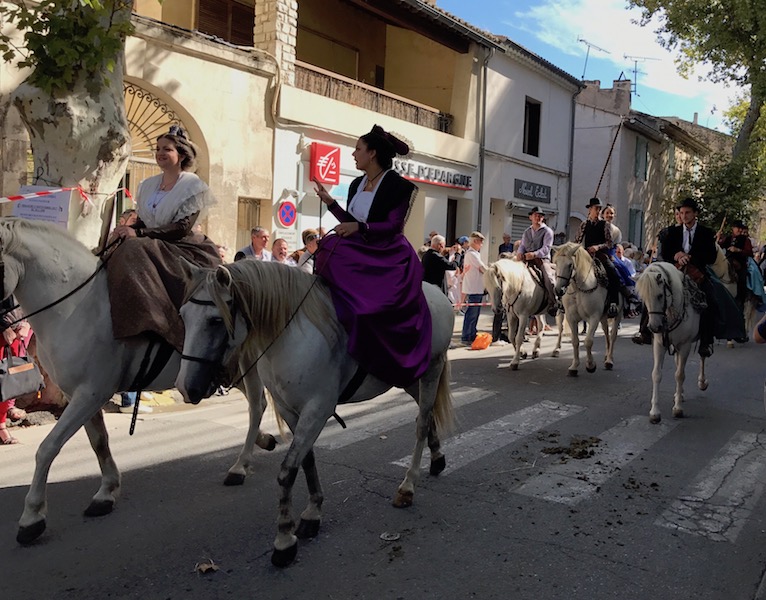
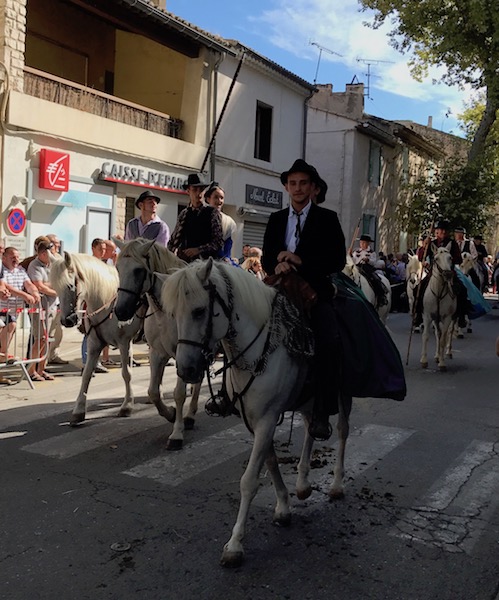

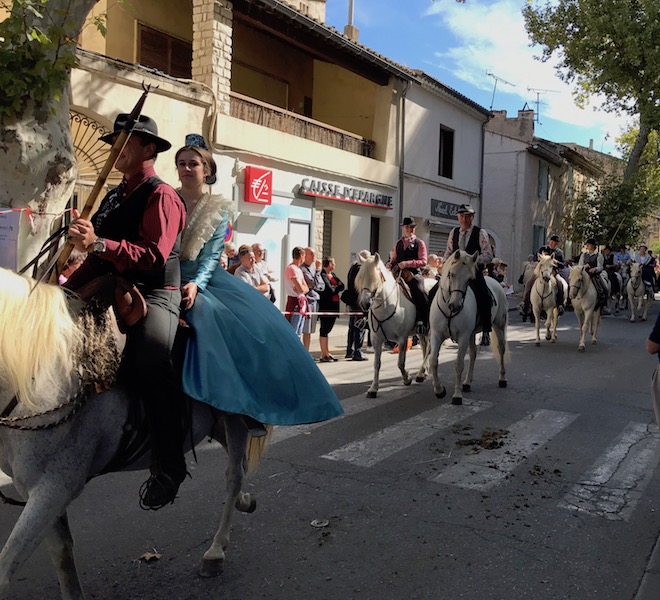



Fast forward to 1944 and the liberation of Mouriès by US forces. Costumes from that timeframe, as well as cars and a few US jeeps.
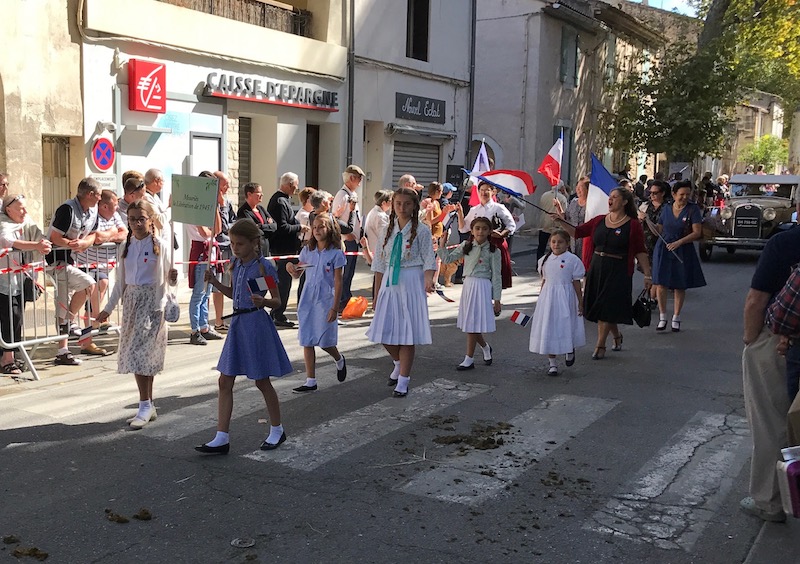
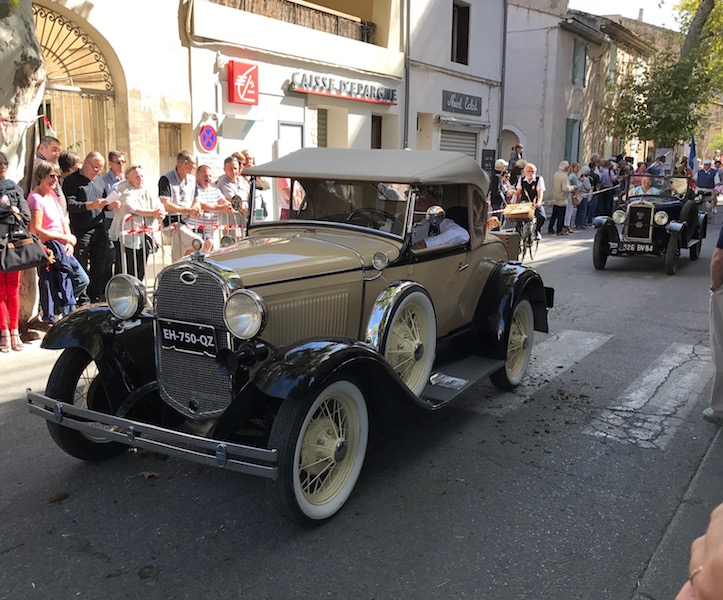
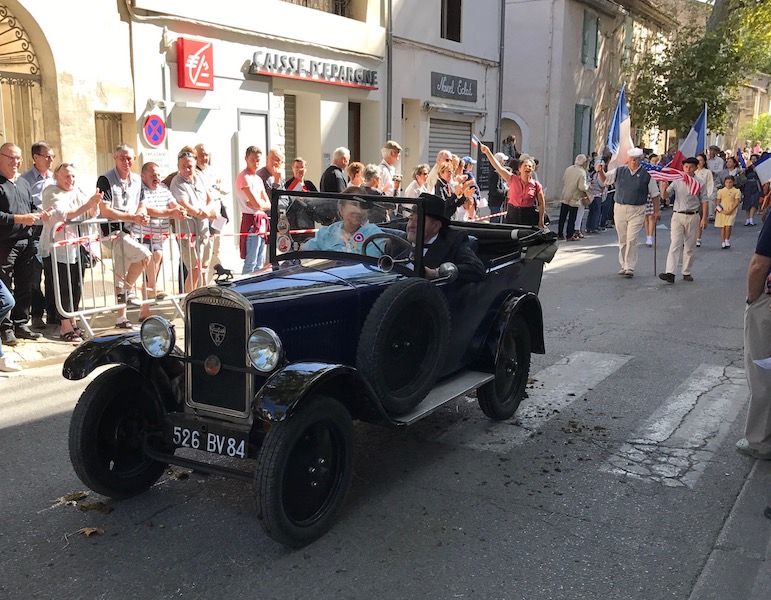
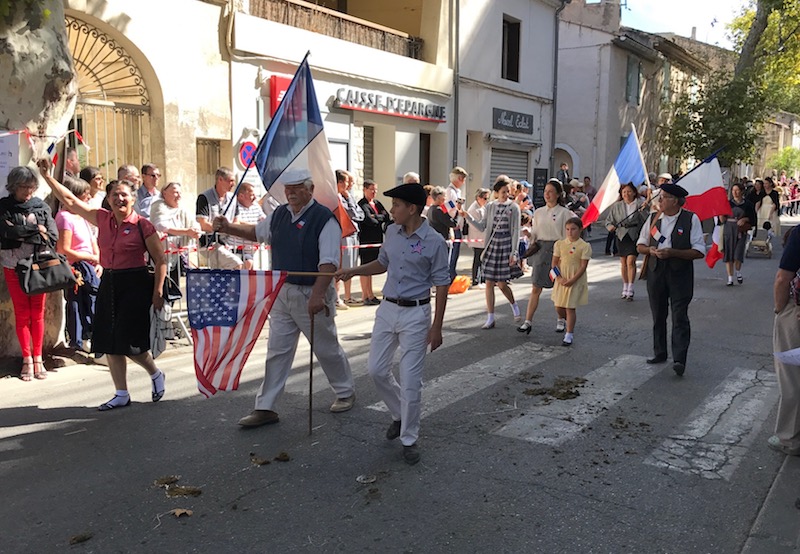
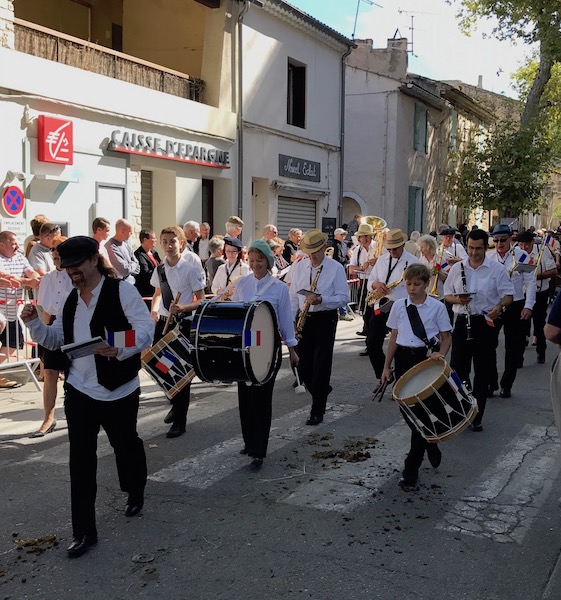
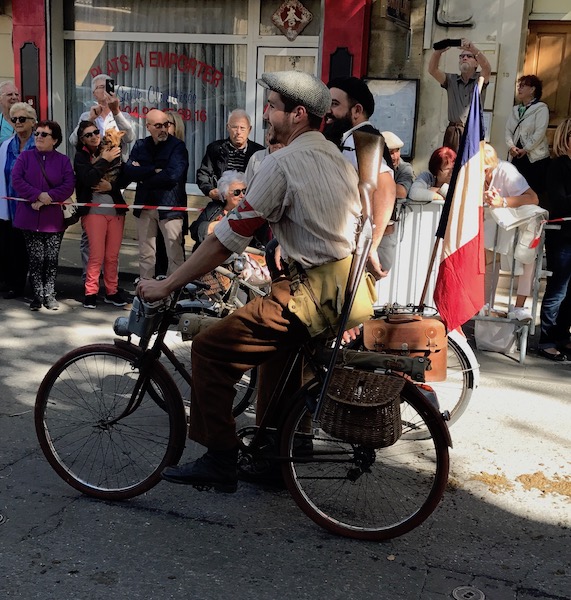

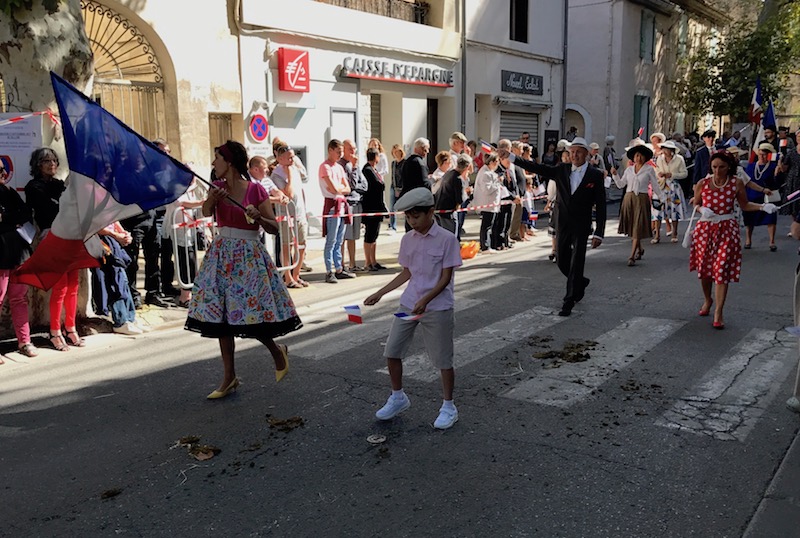

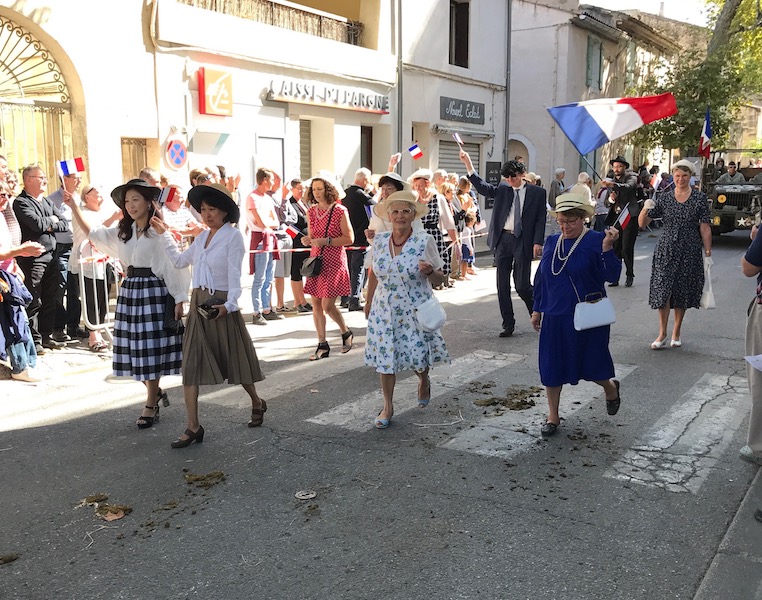

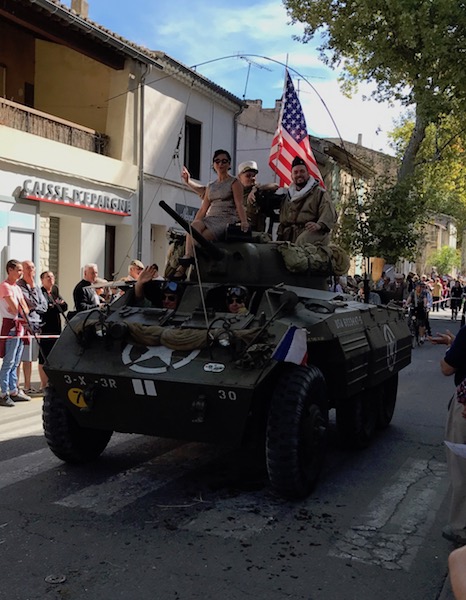

As we were sitting having a coffee in the center of town, the dancers came through and did some additional local dances. There were multiple groups of dancers, all different.
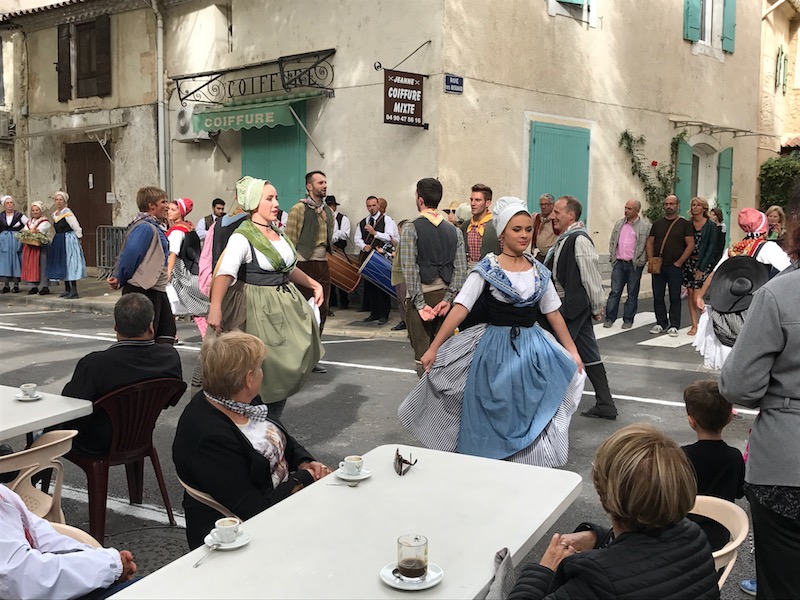

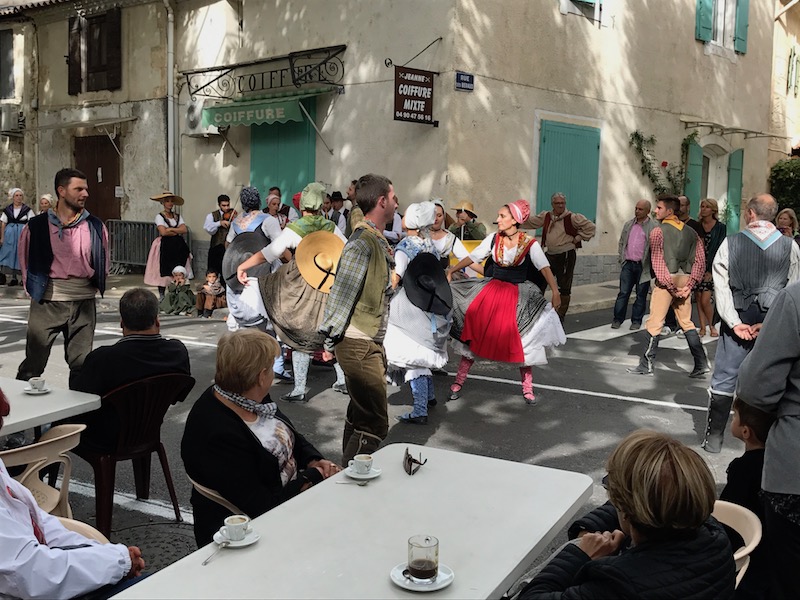
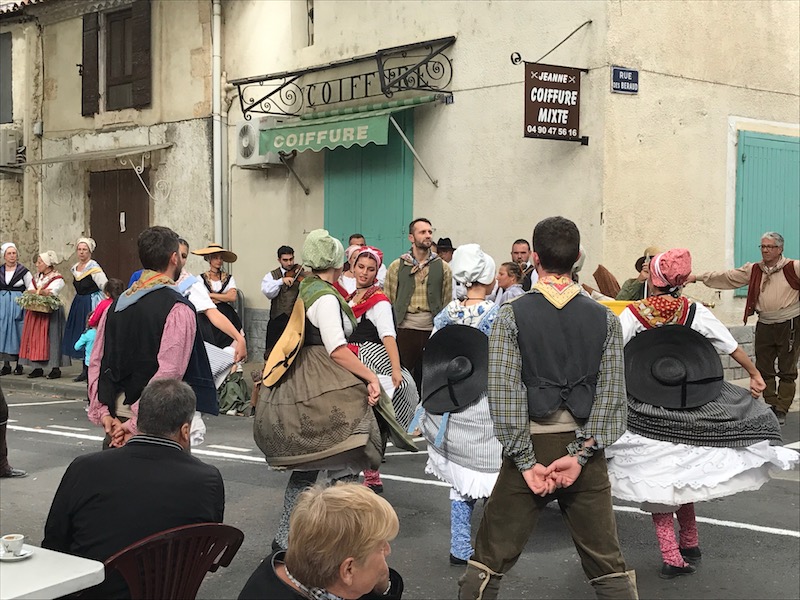
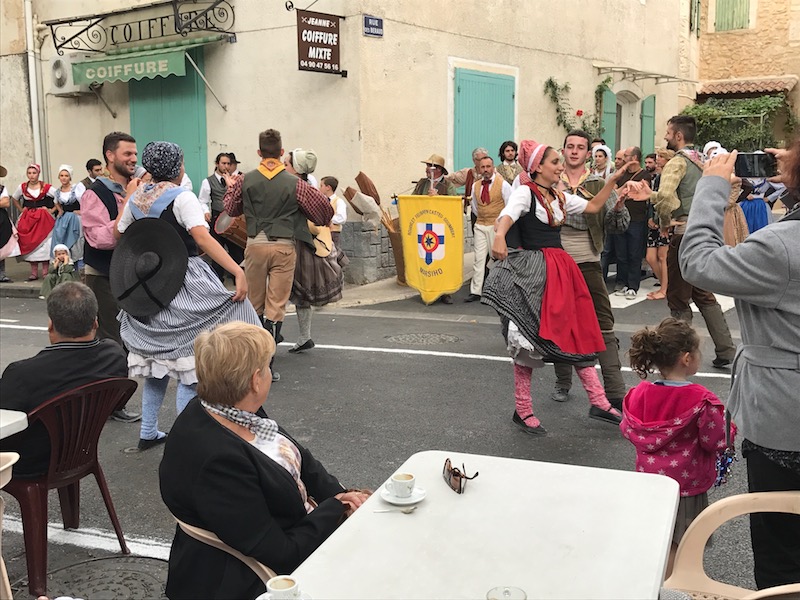
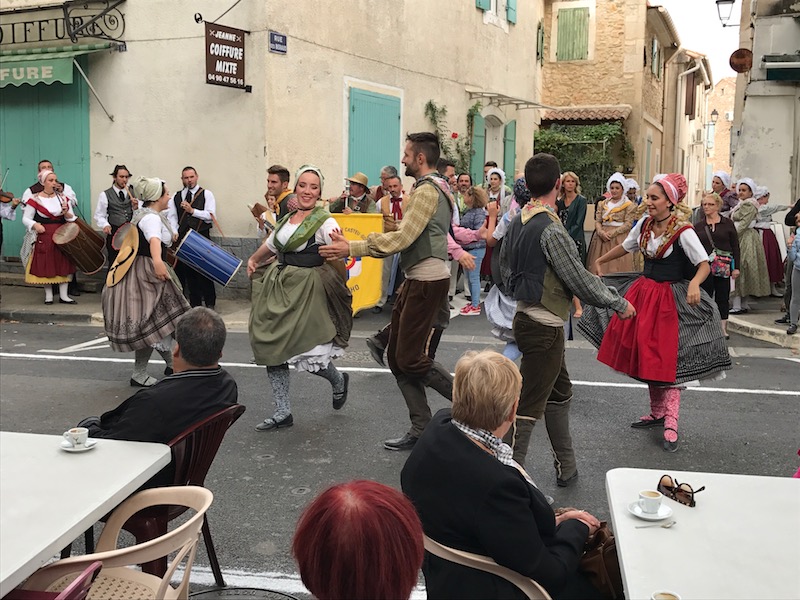
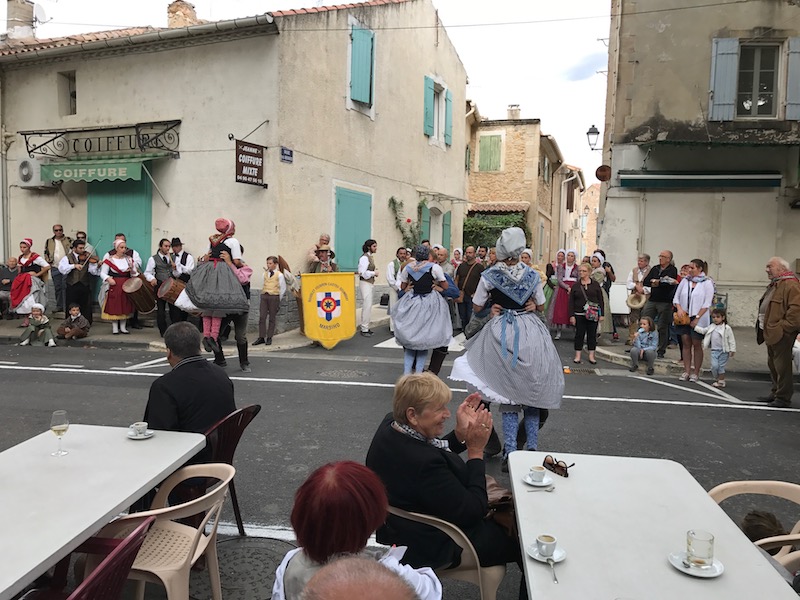
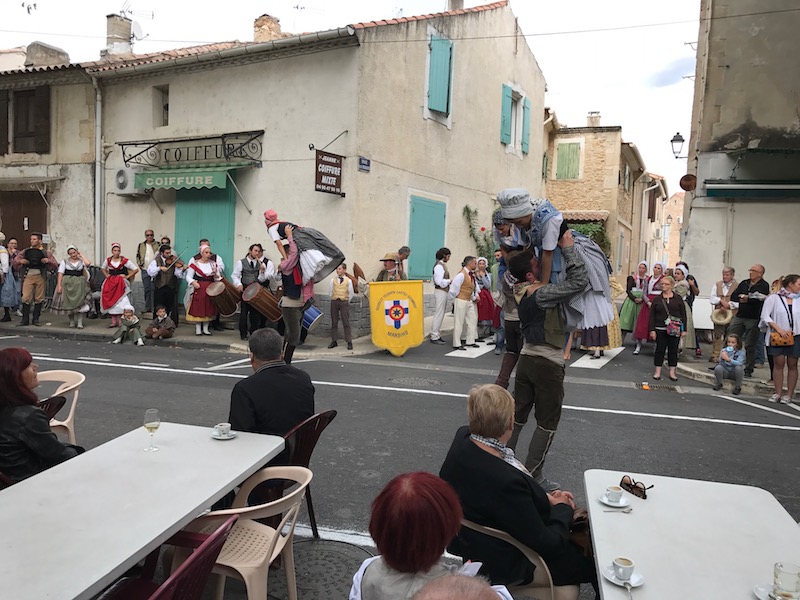
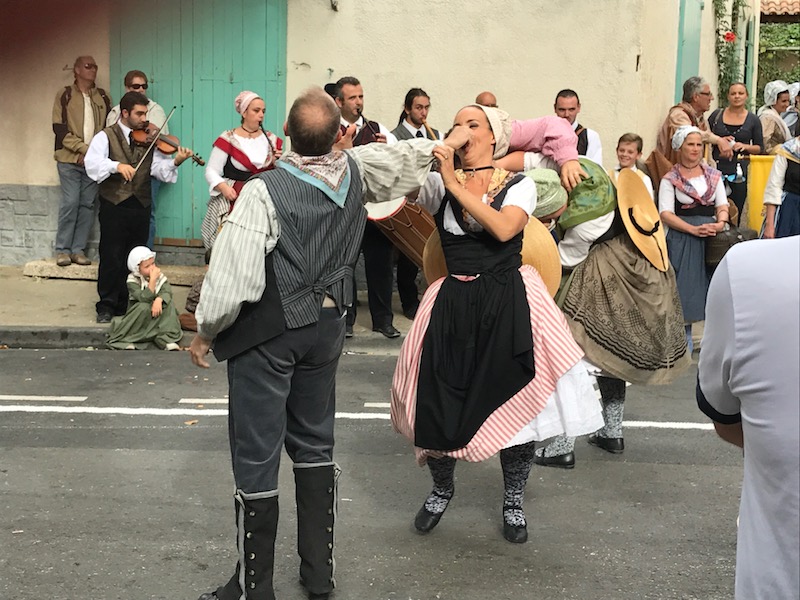

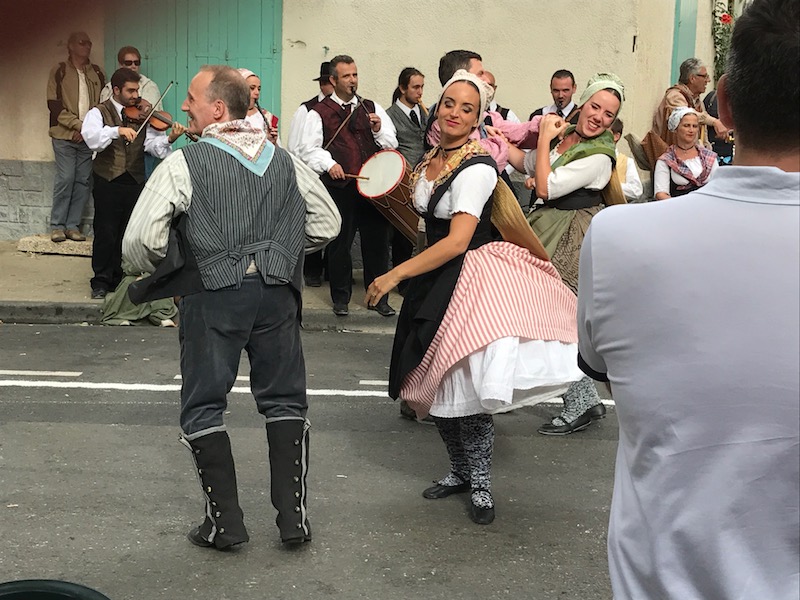
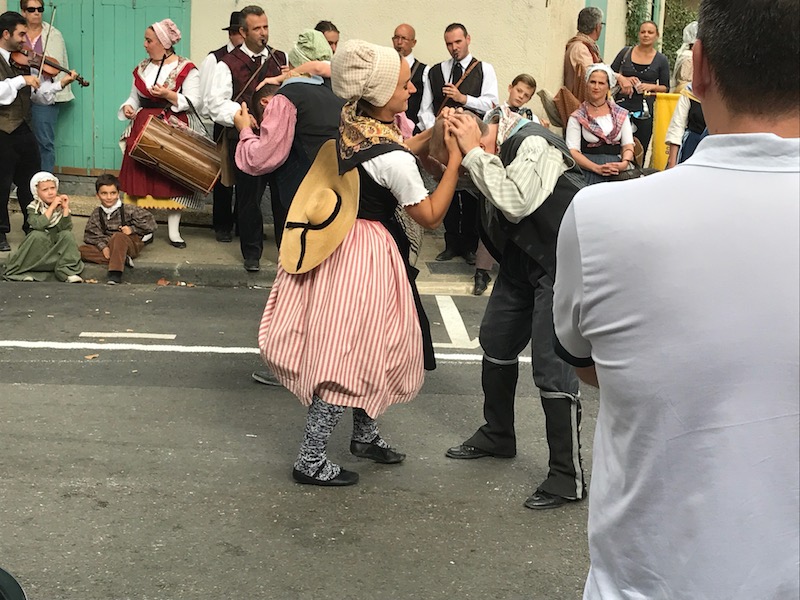

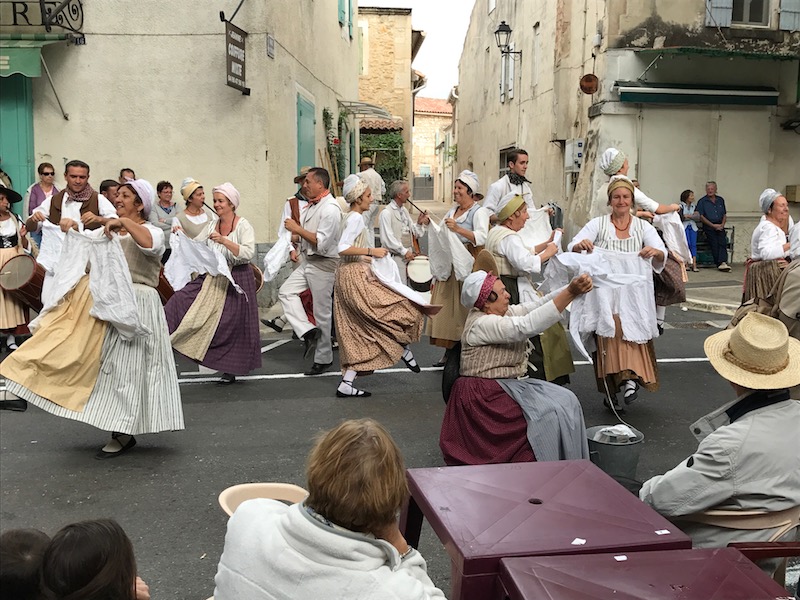
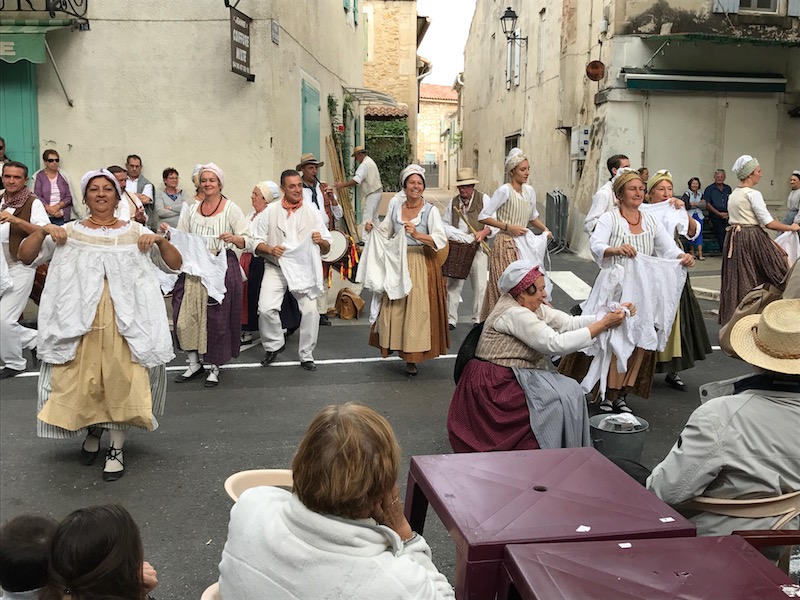

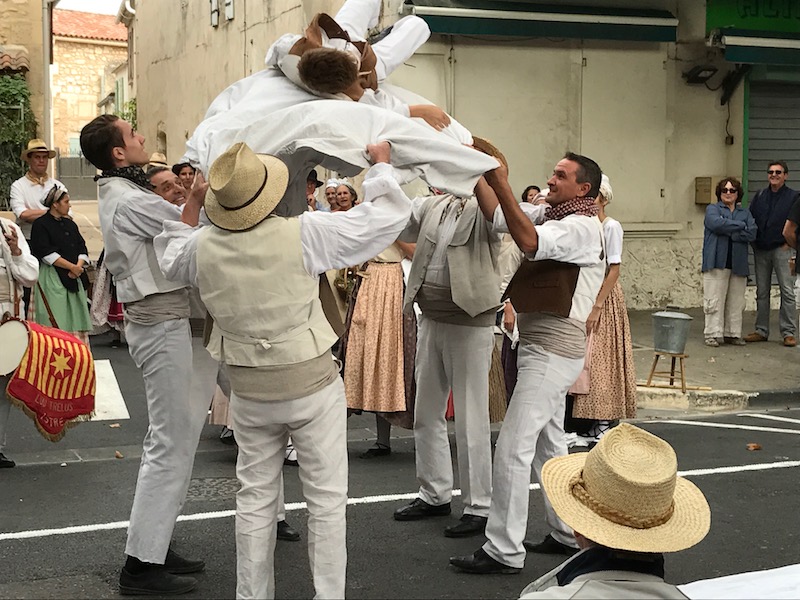
In addition to the pictures, we did take a few videos during the parade and dancing groups so that you can have the opportunity to "hear" the parade as well. If you are interested, you can go to the Parade Video page